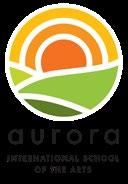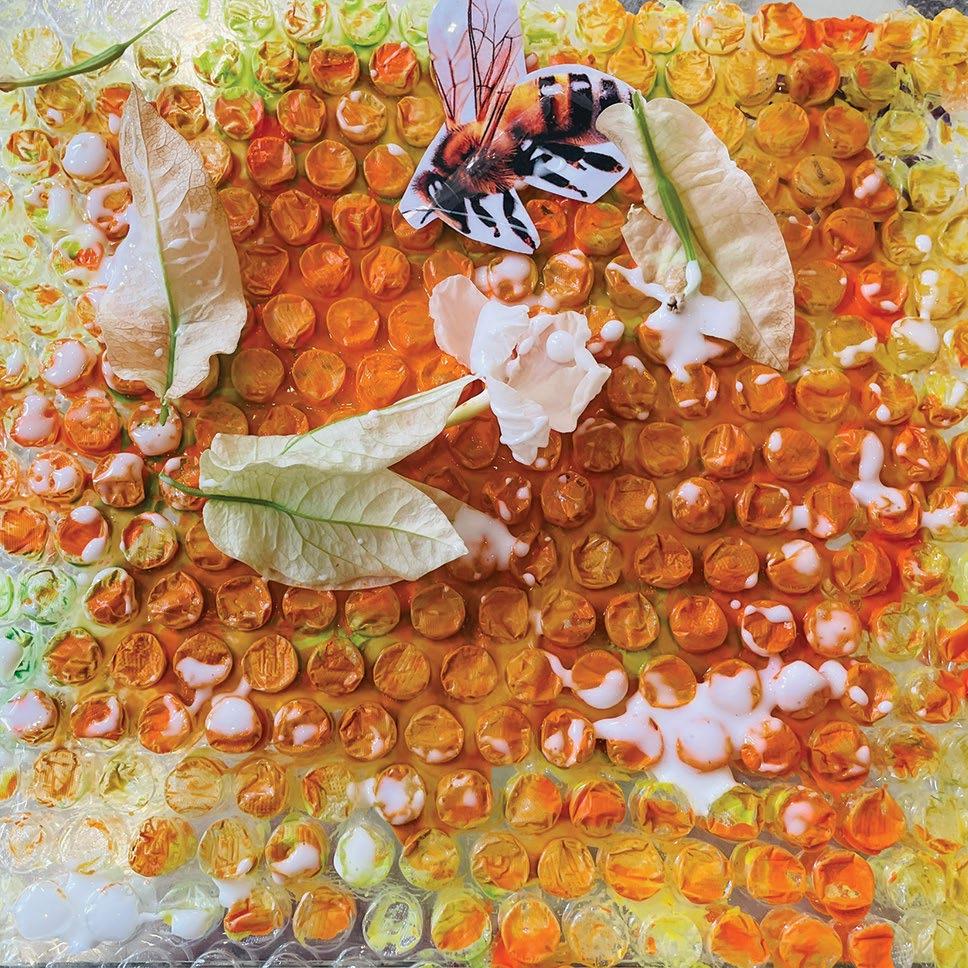

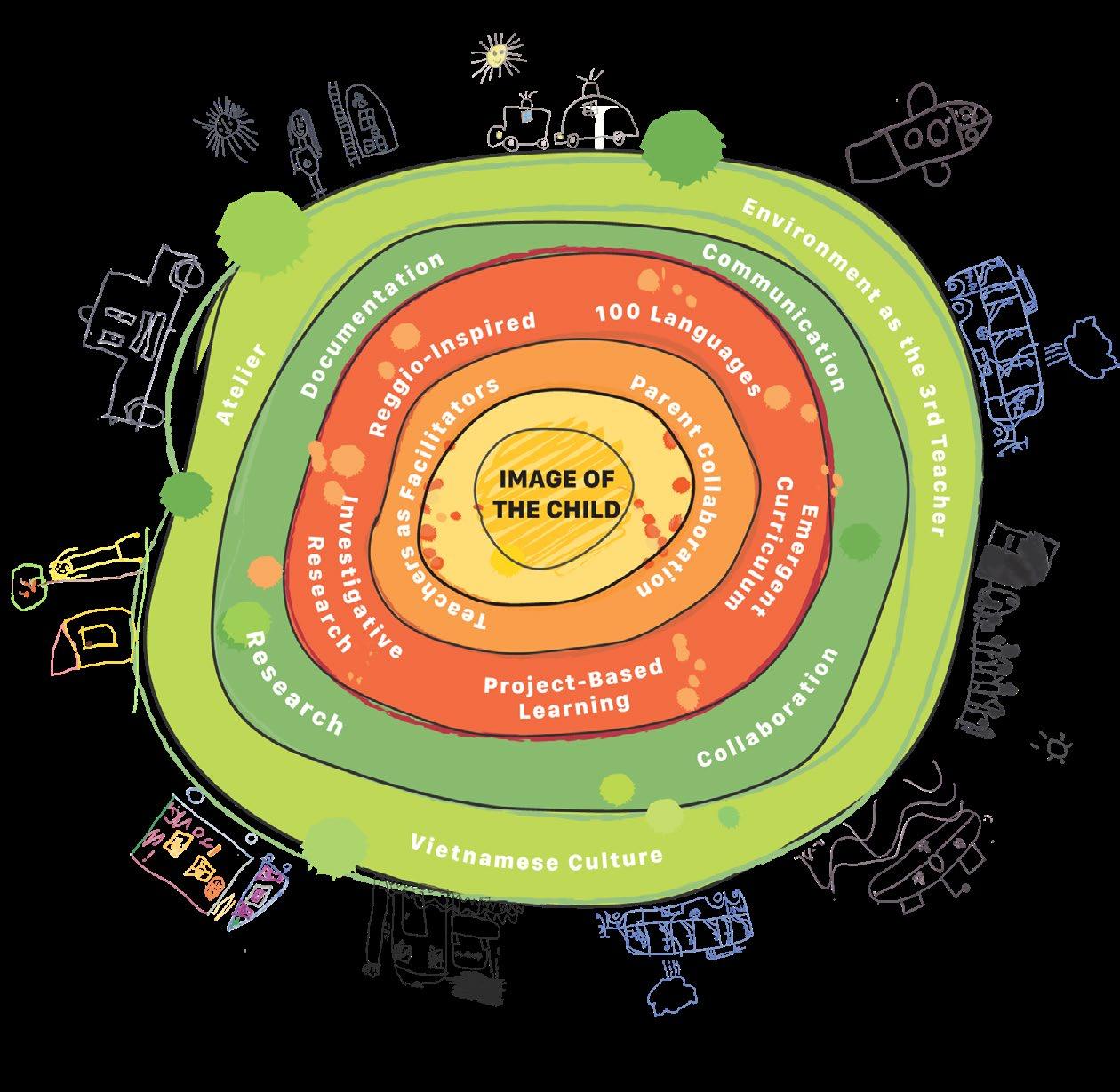
“We are and we need to be convinced of this - in an ecosystem... Our organism, our morality, our culture, our feelings are connected to the environment, to the universe, to the world. And therein lies the web of our life”
- Loris Malaguzzi




“We are and we need to be convinced of this - in an ecosystem... Our organism, our morality, our culture, our feelings are connected to the environment, to the universe, to the world. And therein lies the web of our life”
- Loris Malaguzzi
Dialogue with Place has taken our children, teachers, and school community on a wonderful learning journey of rich deep inquiry and collaboration. What did the teachers as well as the children feel important about ‘Place’?
This was the beginning of our project, and the question that ignited the different pathways classes took. Through observation, listening, being present and slowing down to enable ideas to grow, the children and teachers became researchers together, forming a profound bond with their place, unearthing its hidden treasures, and celebrating its rich stories.
I kept reflecting throughout this year’s project on Tūrangawaewae, one of the most well-known and powerful Māori concepts, tūranga (standing place), and waewae (feet). It is often translated as ‘a place to stand’. Tūrangawaewae are places where we feel especially empowered and connected. They are our foundation, our place in the world, our home. Our outer world and inner world:
During this journey, the children found their place to stand, metaphorically, nurturing a lifelong love for learning and a deep appreciation for the many places we can call home.
Dialogue with Place has not ended; I believe it will continue to evolve and grow with each child throughout their life.
Ms Penny Pedagogista
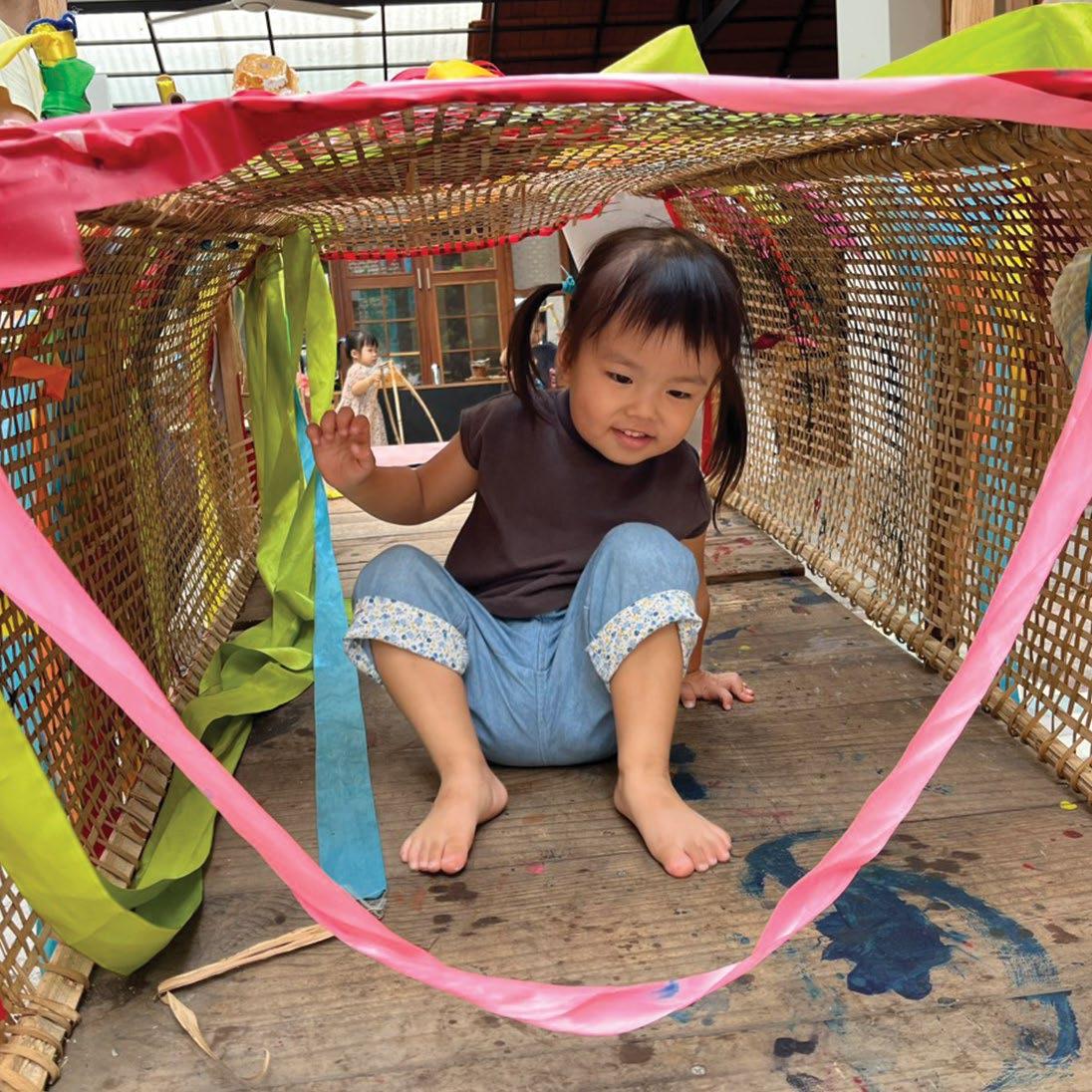
This year, in the Camellia class, we have embarked on a captivating exploration centered around Dialogue with Place. Within this, we have discovered a multitude of interpretations and approaches that have piqued our curiosity and fueled our investigations. Our primary focus has been on the interplay between people and their physical and social surroundings. We have delved into the understanding of the cultural significance and social dynamics that shape a particular place and our place within it. Through this process, we sought to engage with our environment in a deeply meaningful way. Our journey took us on a wonderful route through finding our identities at school, within the Aurora community as well as within the Camellia community. This year has allowed us to explore through the lens of our children, their interests and investigations.
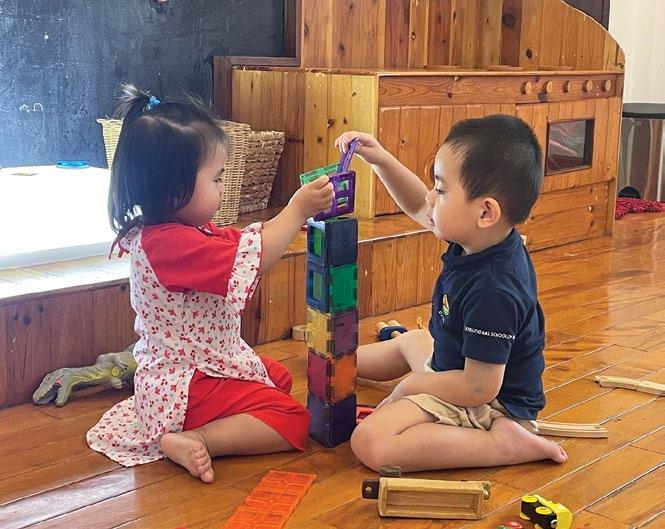
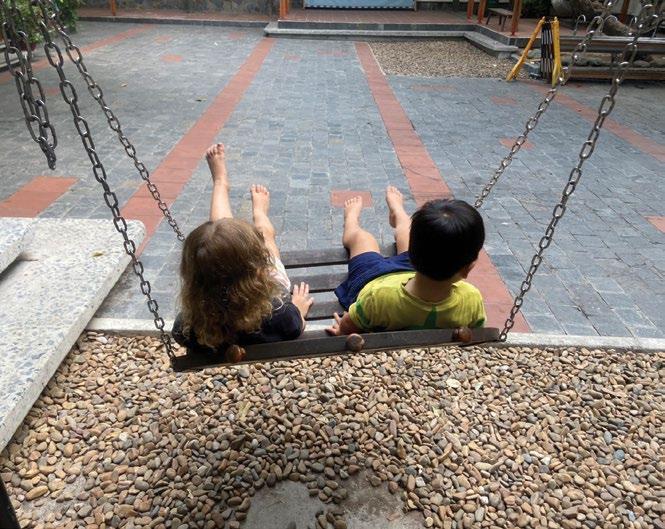
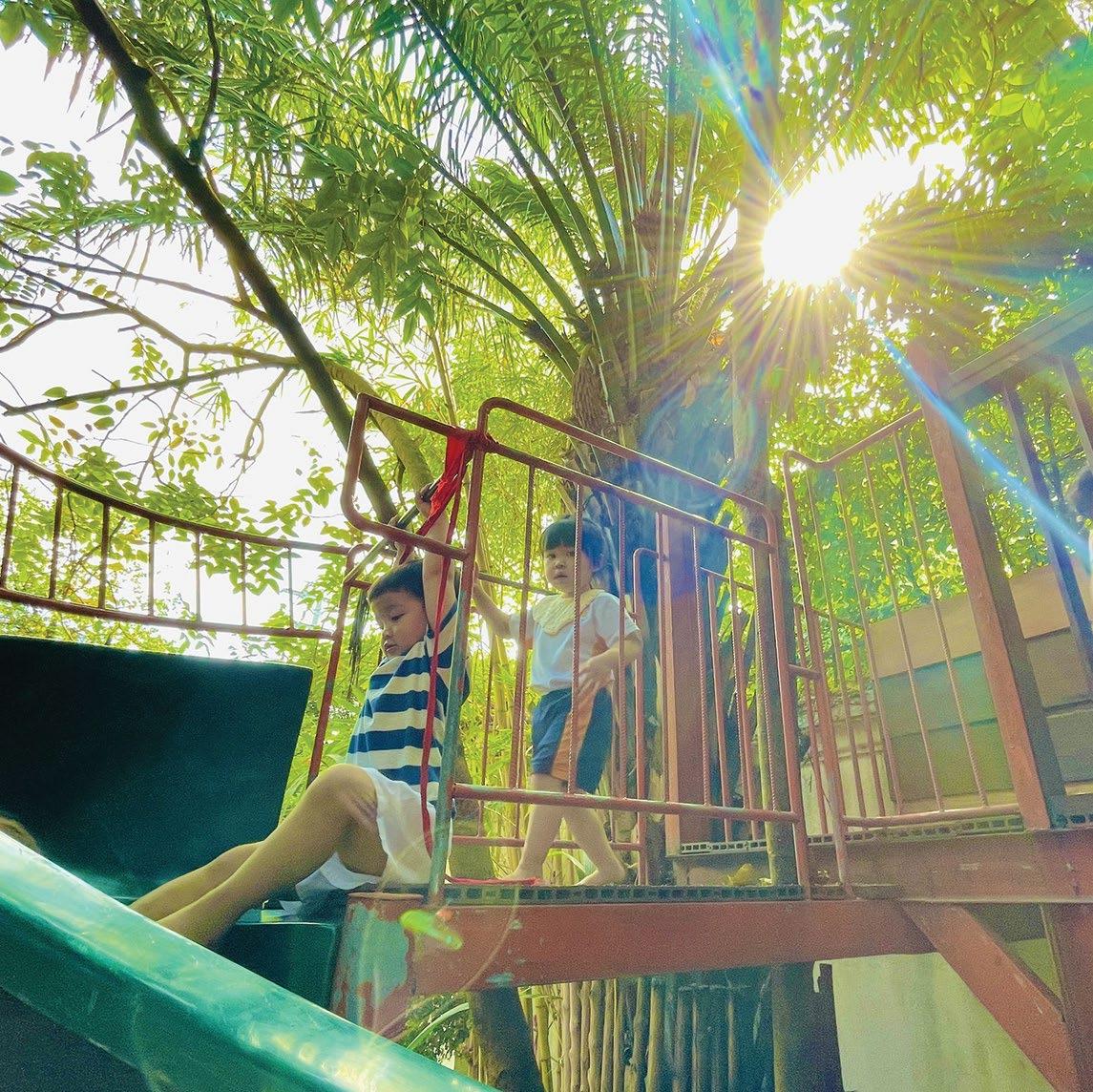
Finding our place in this world can sometimes be challenging, and as we begin experiencing the wonders that school offers us, we start to think about our place within that. As we discover our place within the classroom, we form new friendships and have the confidence to explore new experiences. Expressing ourselves freely through play and artistic experiences is nurtured through the relationships made with teachers and a creative environment. Together, we embarked on a journey of self-discovery and connection, finding comfort, belonging, and endless possibilities.
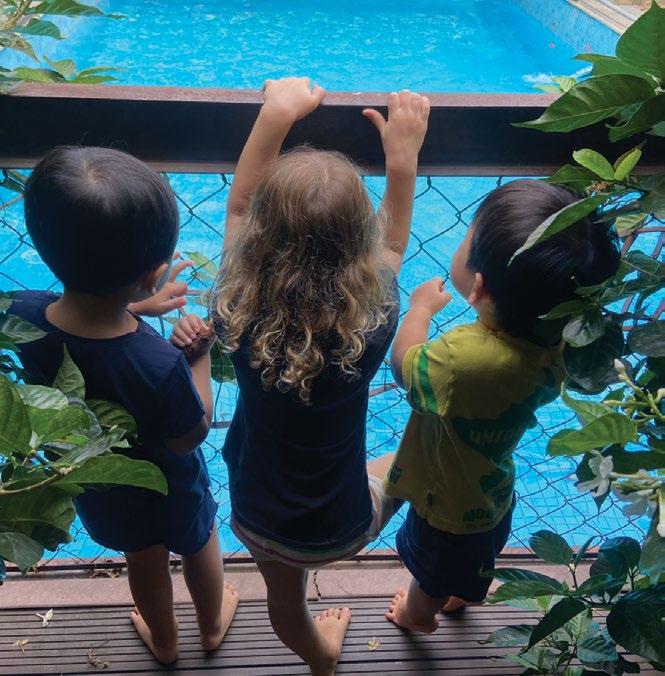
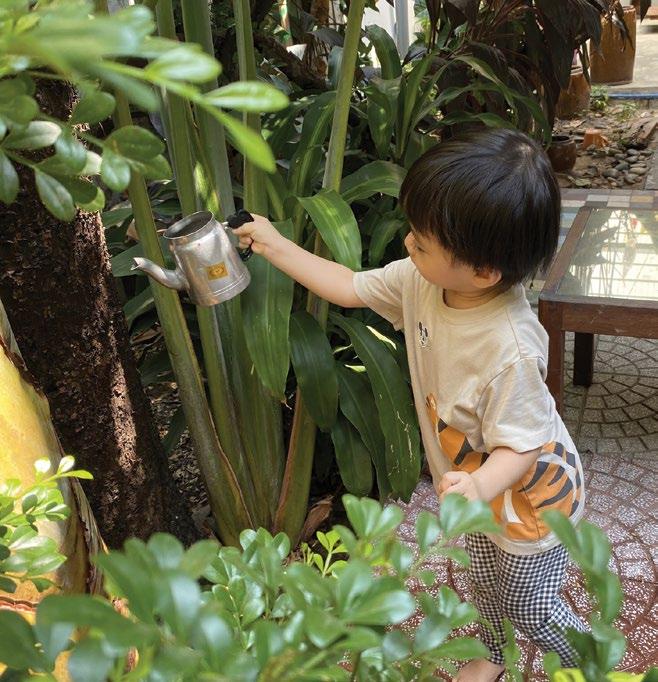
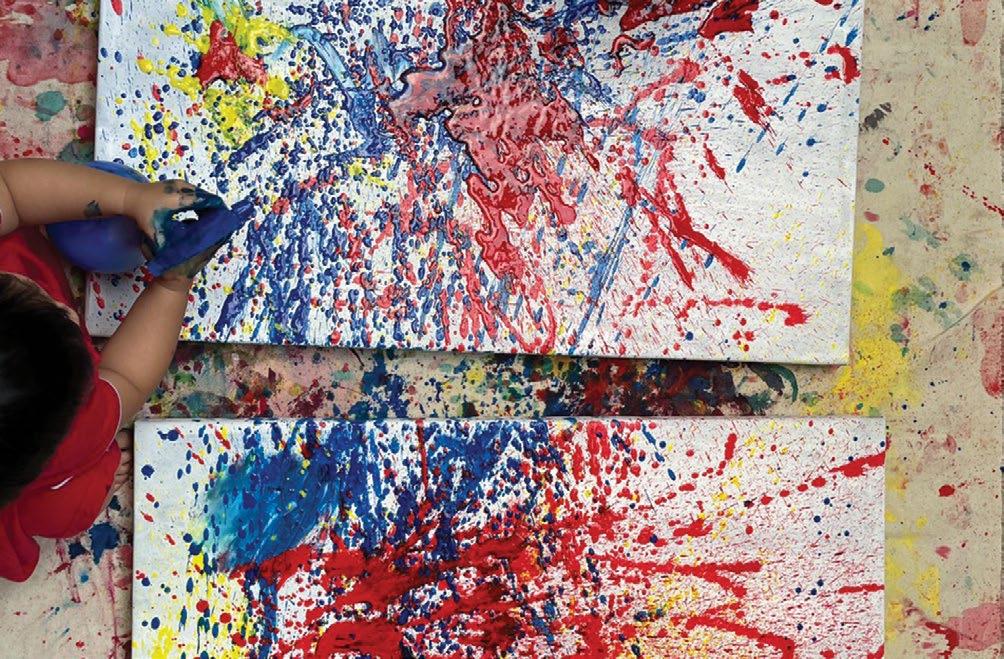
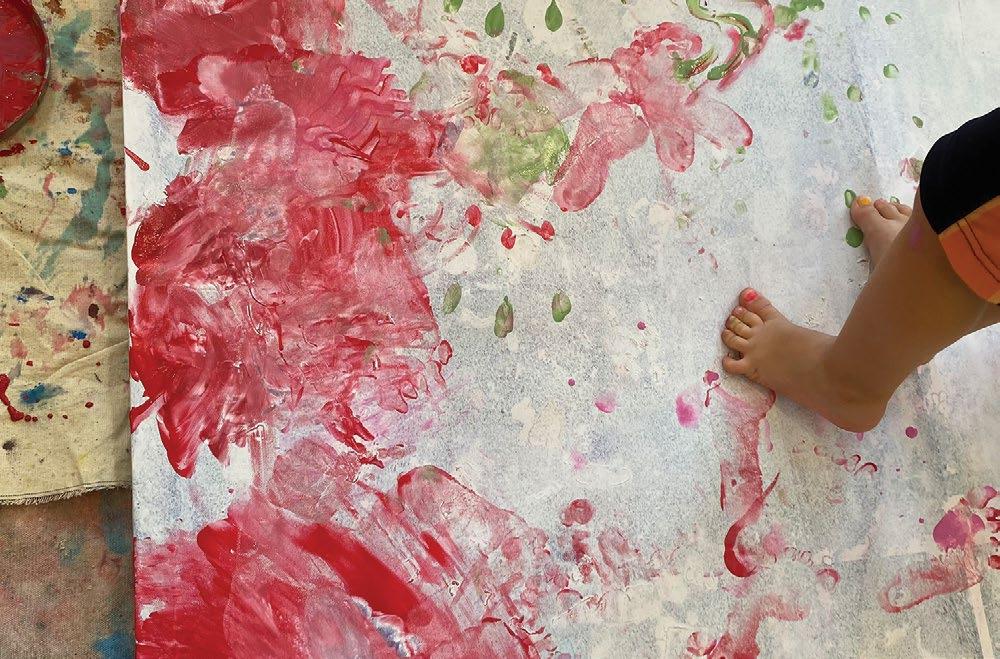
Body part painting
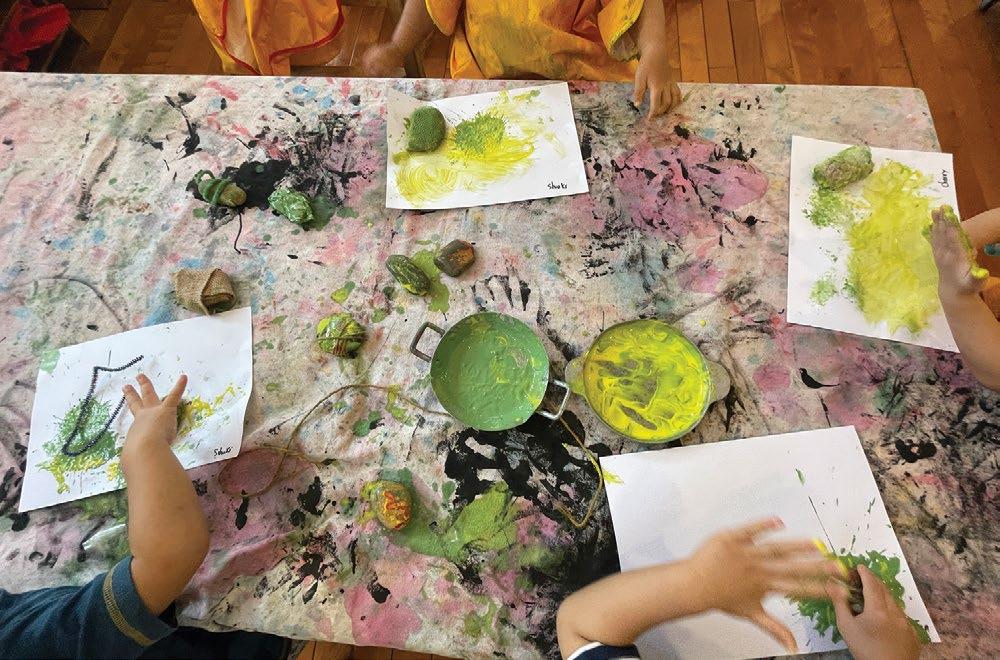
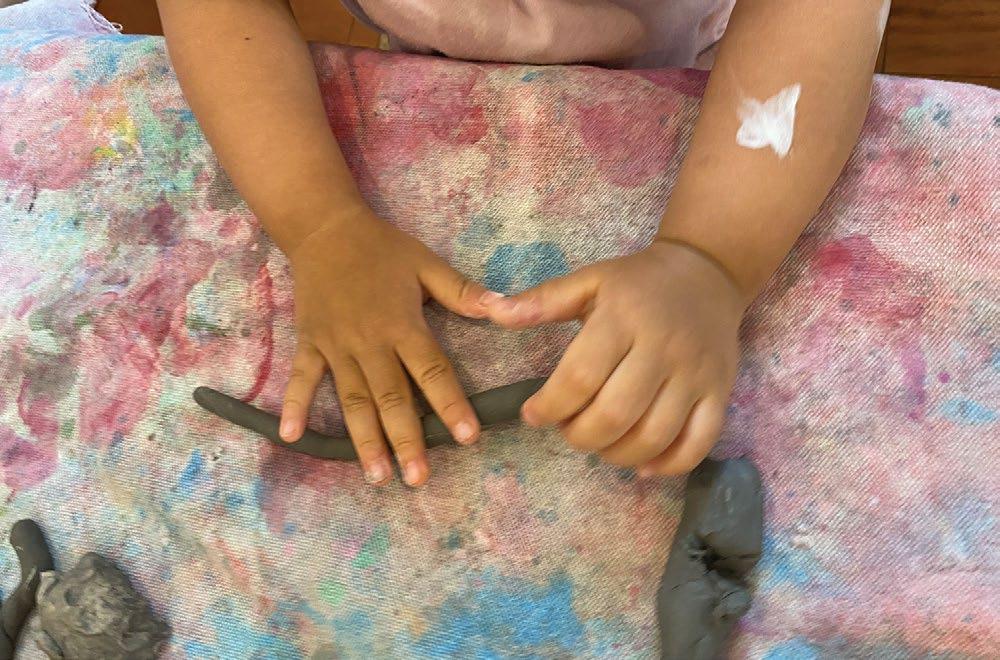
A thread we noticed very early on in Camellia was the connection to the ‘House’. As school is often one of the first places outside of the home where a child feels safe, comfortable and happy, we noticed how the children were drawns to recreating wonderful and magical experiences from home.
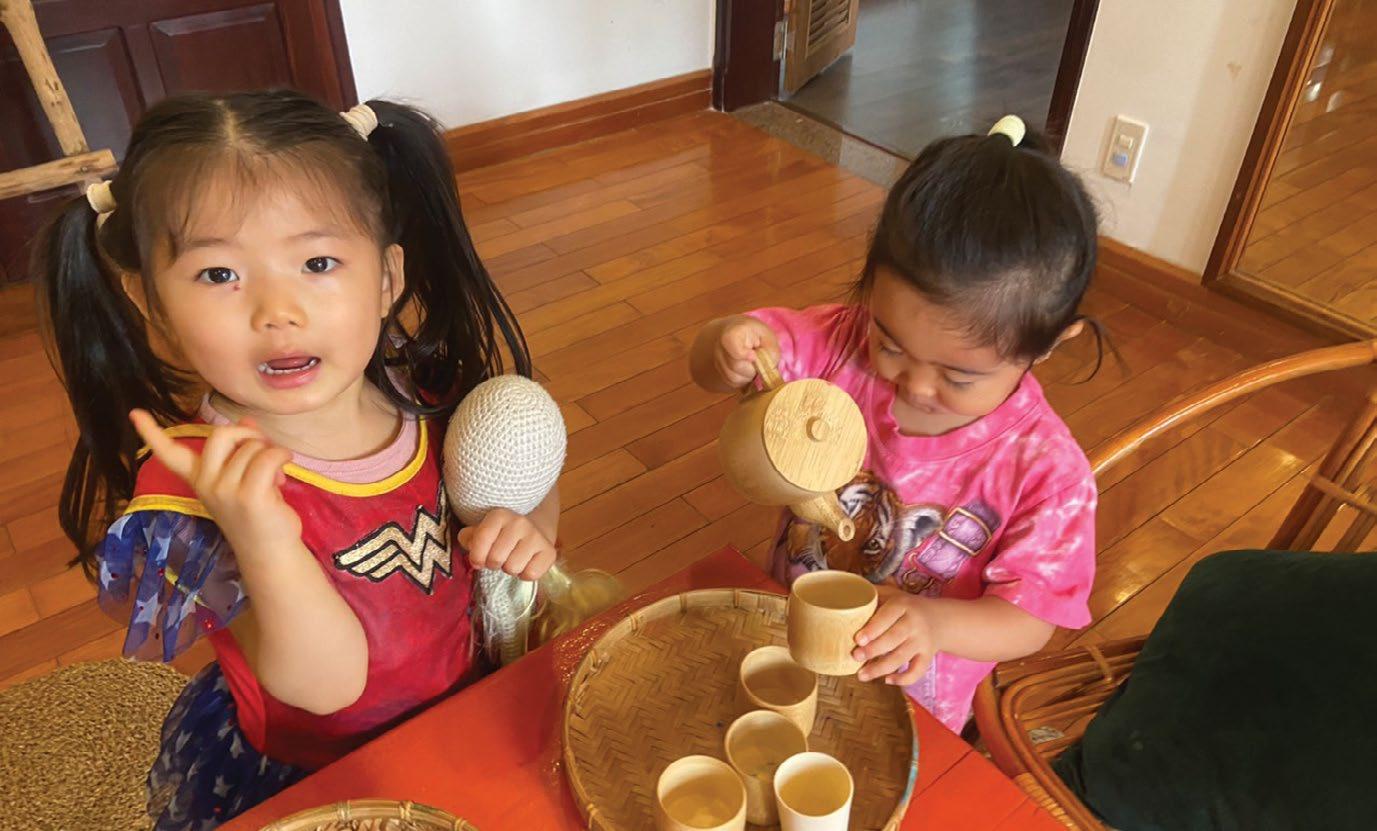
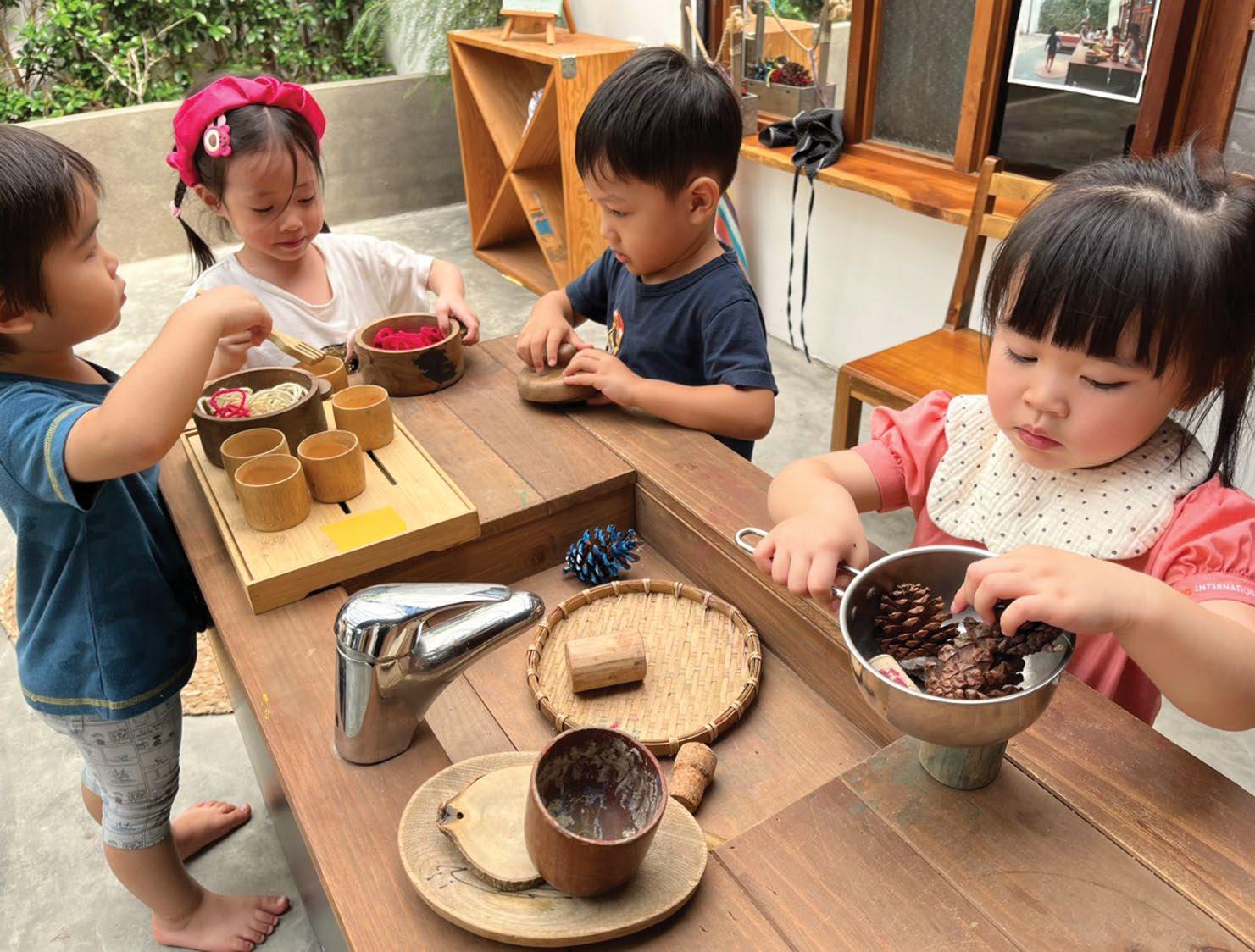
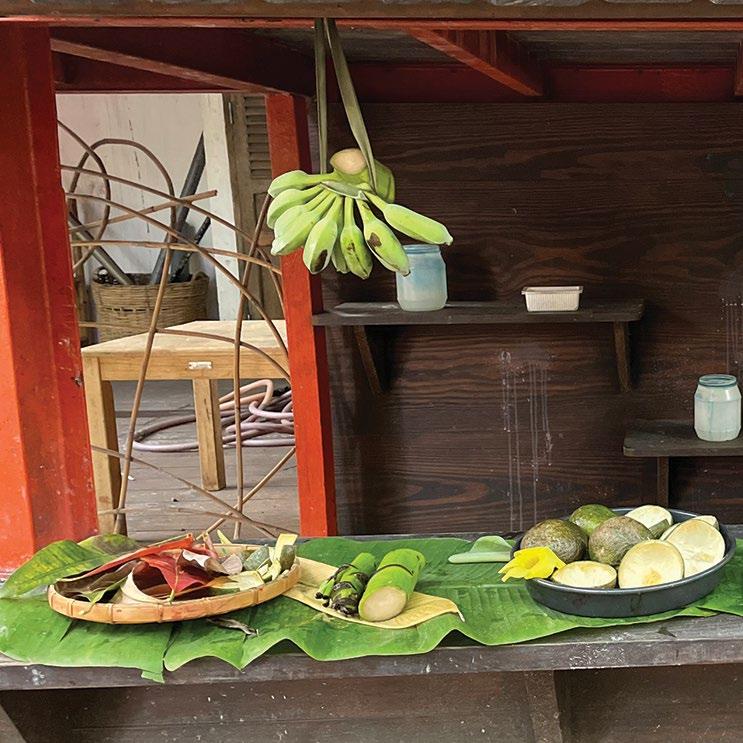
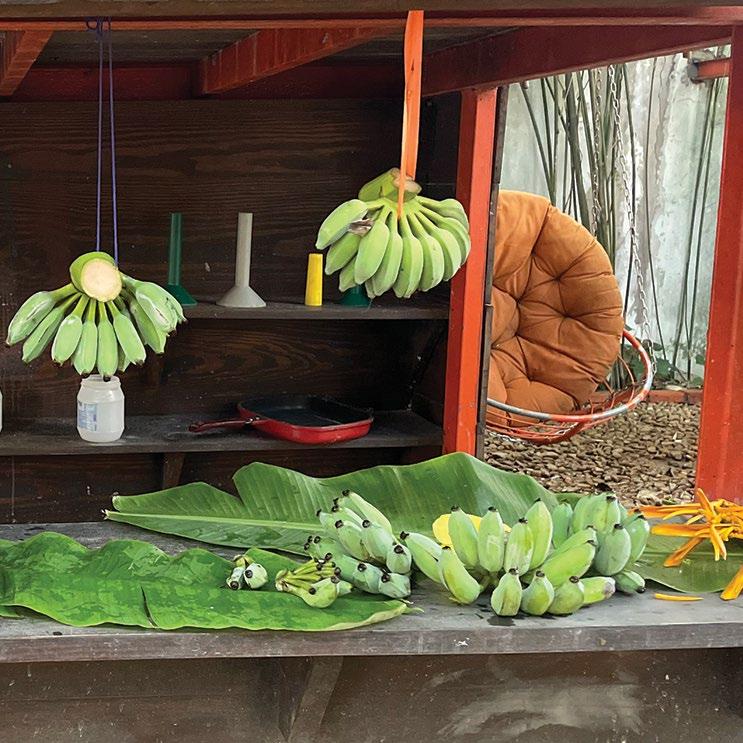
Whether it’s inviting our friends and teachers for tea or coffee in the morning, or making wonderful ‘breakfast’ dishes together, it was how we would start our day in Camellia.
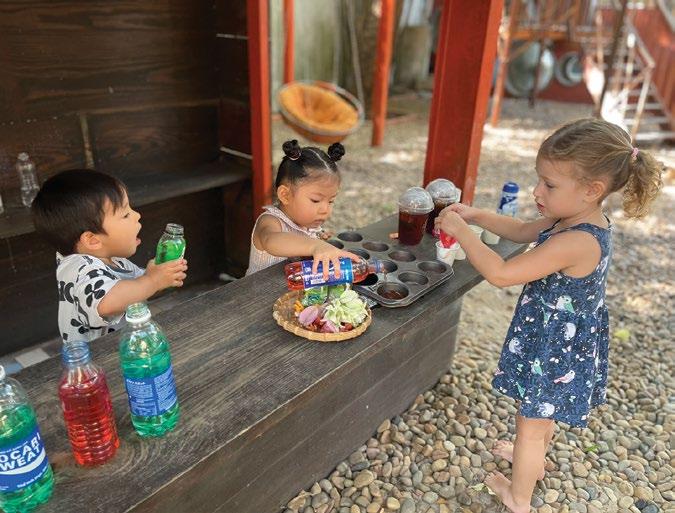
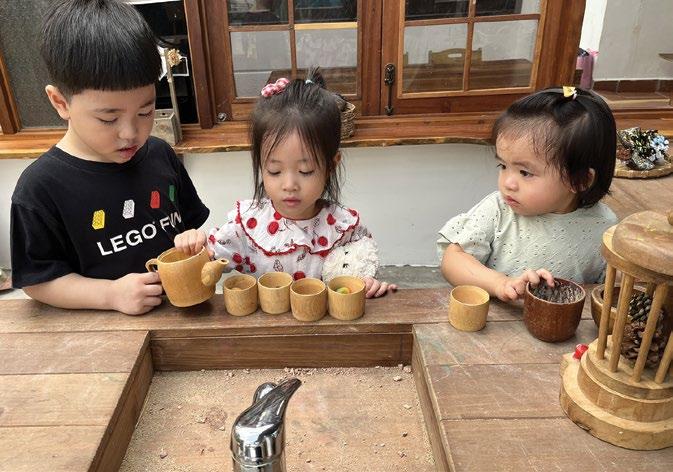
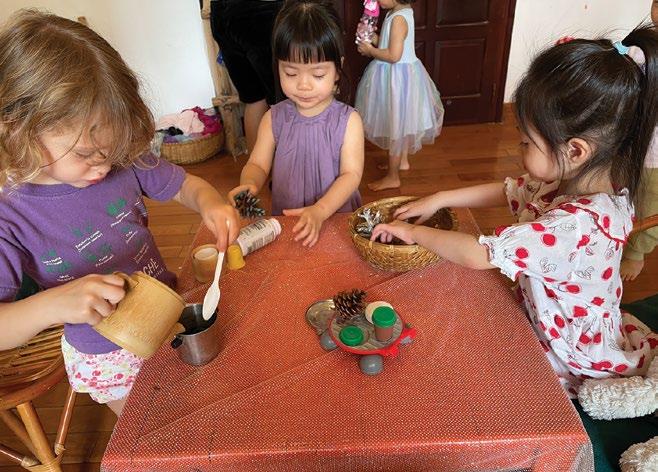
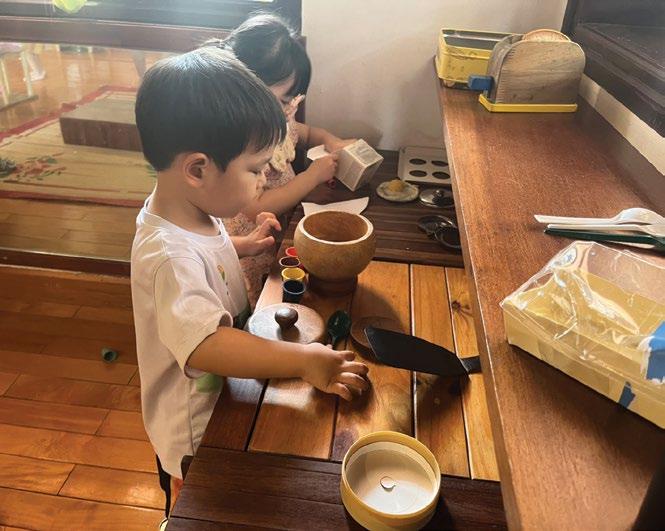
We even had our own imaginary coffee shop on the play ground where we could make and sell a variety of delicious teas, coffees, ice creams and snacks, ‘Camellia Café’ .
The bond with home is very strong. We were inspired by what we saw and did at home, so we decided to explore the making of food and juice. It was an exciting adventure for us. In our classroom, we put on aprons and got ready to explore flavors, textures, and scents. We enjoyed discovering food and the magic of different ingredients. The colors and scents of fruit and vegetables fascinated us. Everything became a new discovery. Through our exploration of food, we felt a deeper connection to our homes and our lives, realizing that food can bring people together and help us understand our world. As we continued our journey, we carried with us the experiences learned and the memories made of delicious flavors and aromas sparking our imaginations. Food became a way for us to learn about ourselves, our homes, and the diverse world we live in.
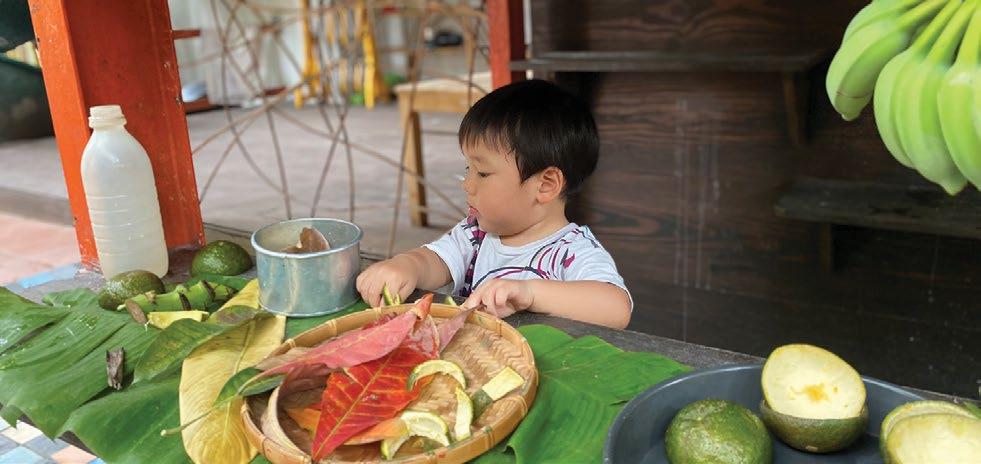
We began the journey with fruit. The table filled with laughter and excitement as we worked together, squeezing and twisting to extract every drop of sweet juice from oranges. The taste of the freshly squeezed orange juice brought smiles to all the children.
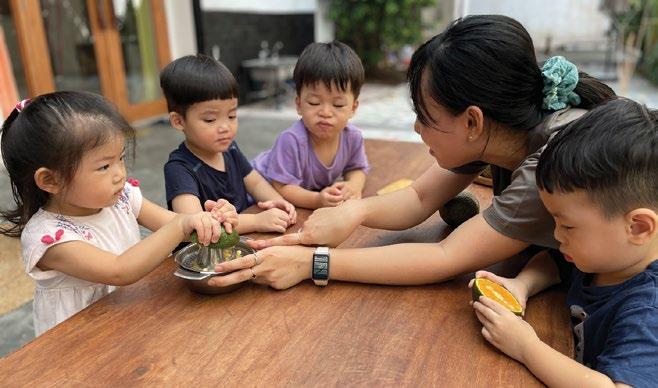
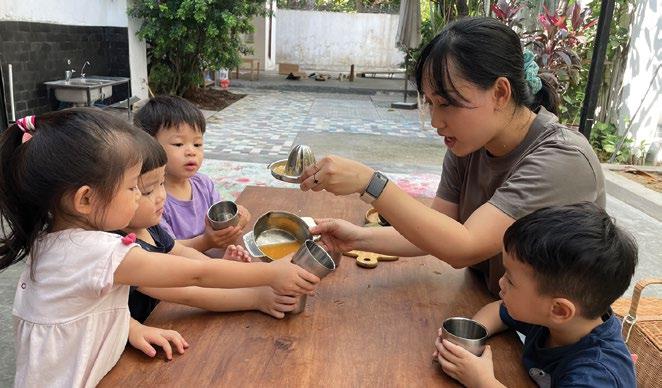
Inspired by our success, we ventured further into juicing and chose a succulent watermelon as our next adventure. Our hands became sticky and wet while taking turns to scoop and shape the juicy fruit, enjoying its coolness and crunchiness, but this only added to the joyous experience.
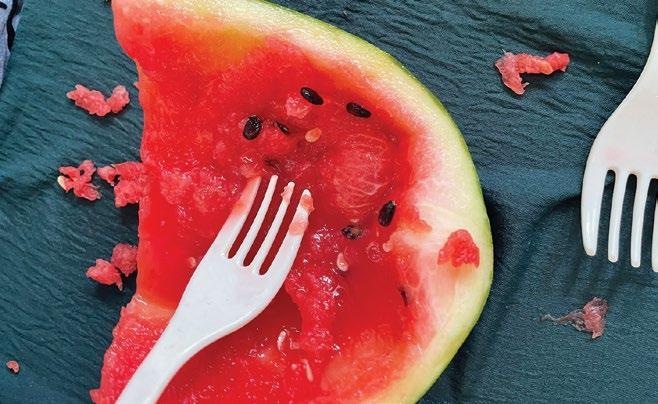
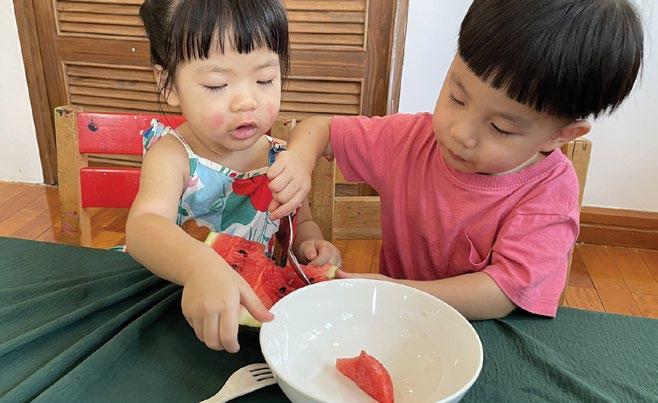
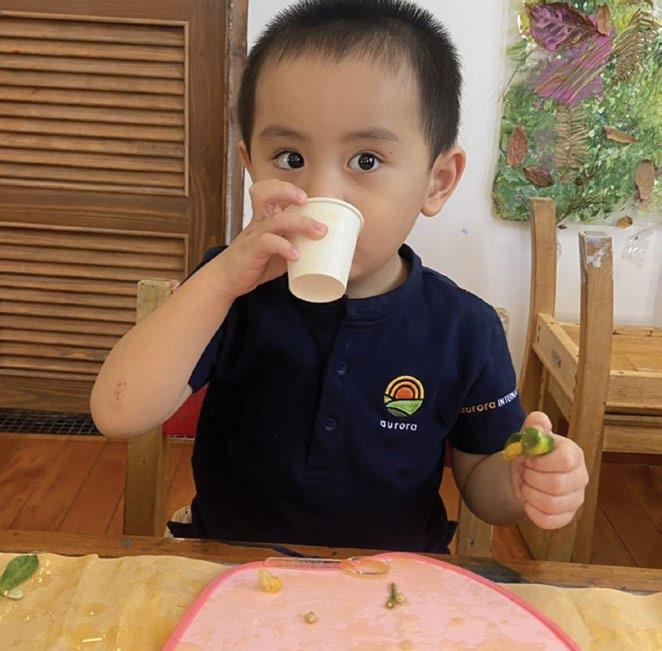
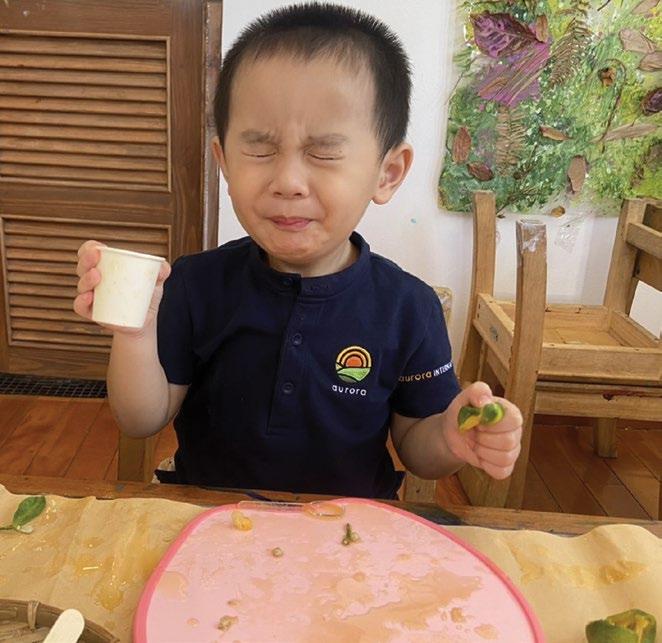
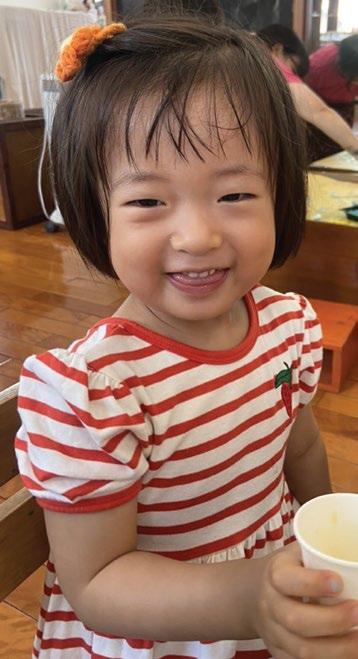
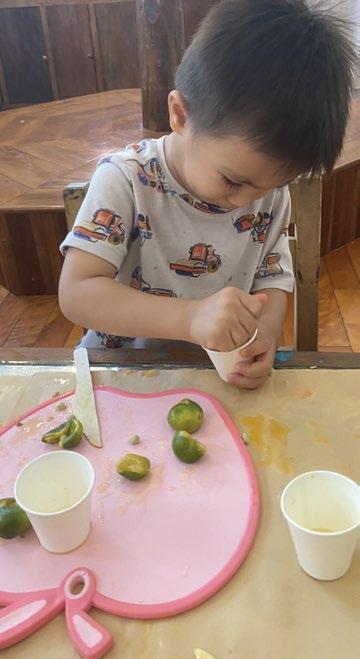
As we perfected our juice making skills, we discussed what we could taste
Would it be sweet?
Would it be sour?
We laughed with each other as we all pulled funny faces from the sour taste of the kumquat.
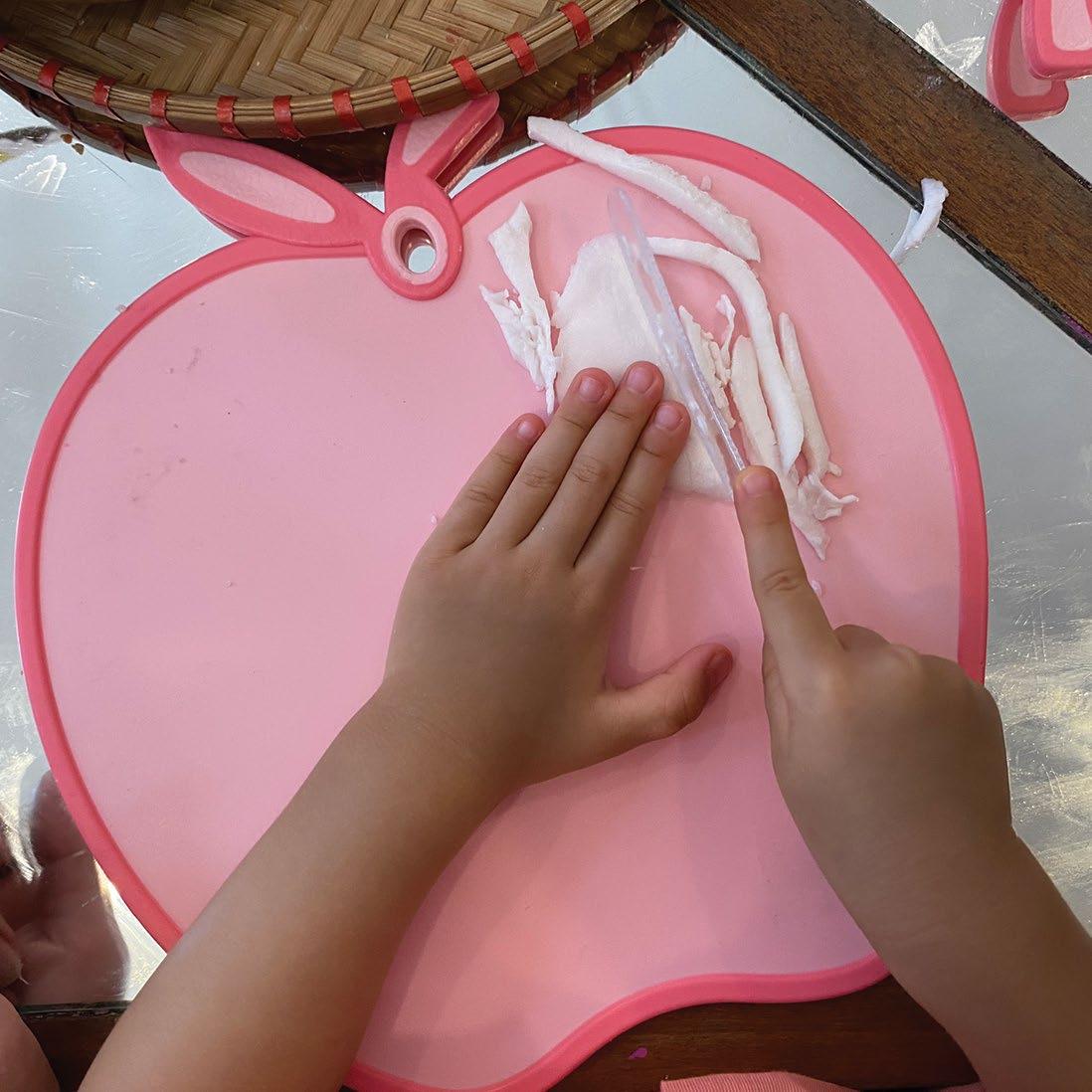
The children made their own candied coconut, which is a traditional snack served in Vietnam during Tet. We were excited to discover and explore the traditions of the country we are living within and the connections we have between food, culture and the place we all call home.

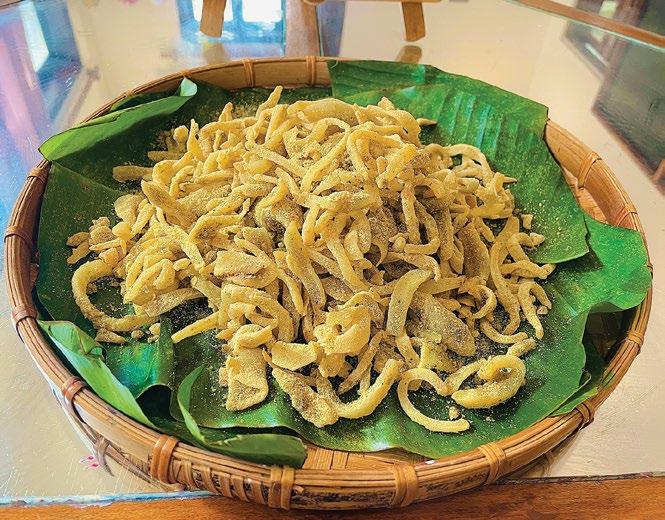
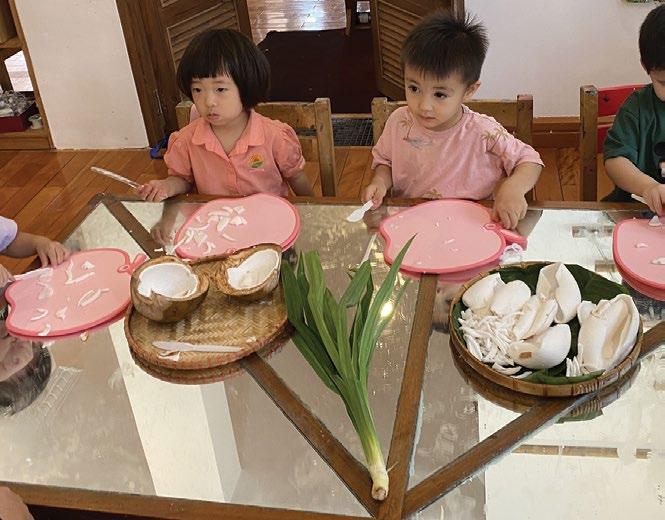
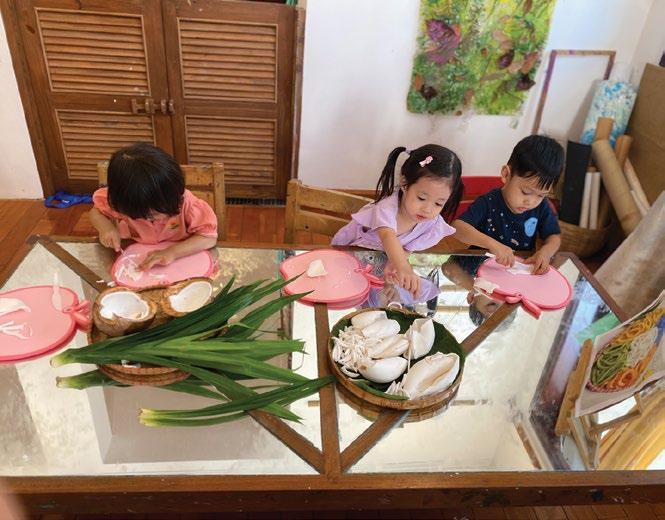
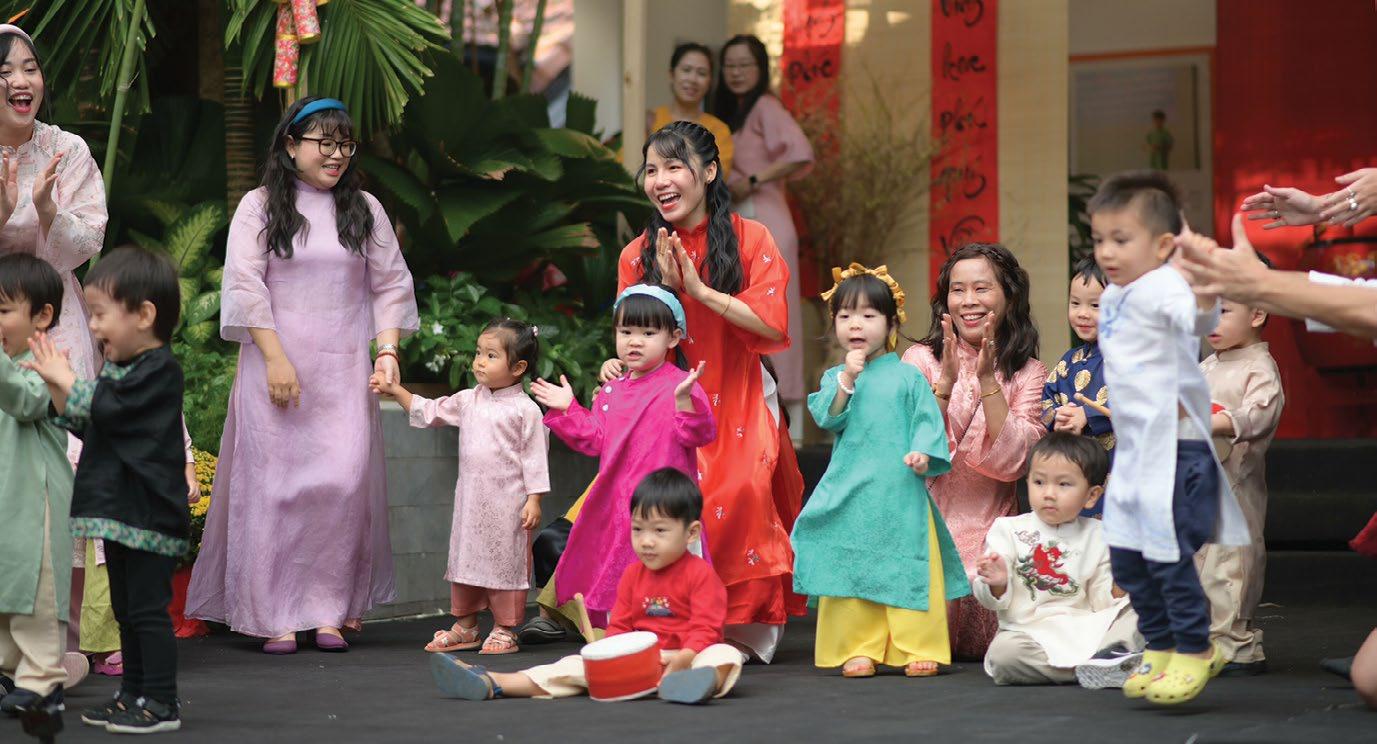
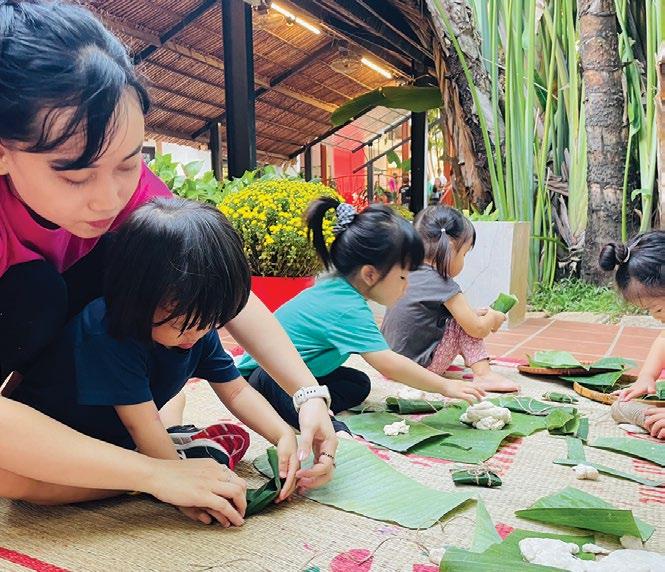
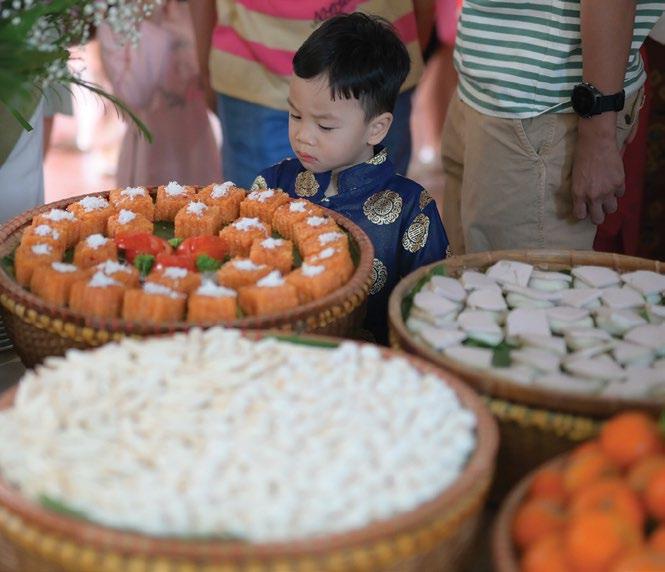
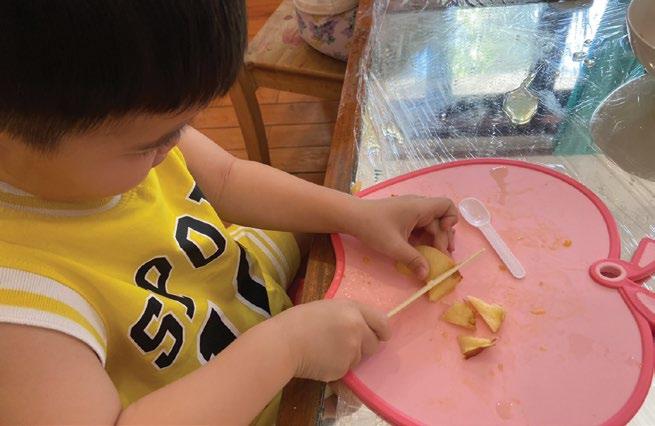
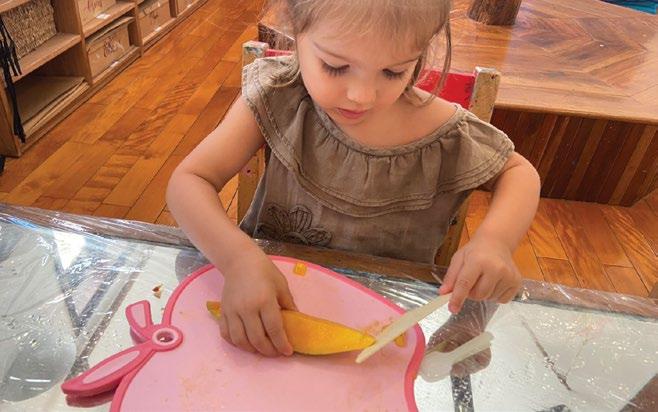
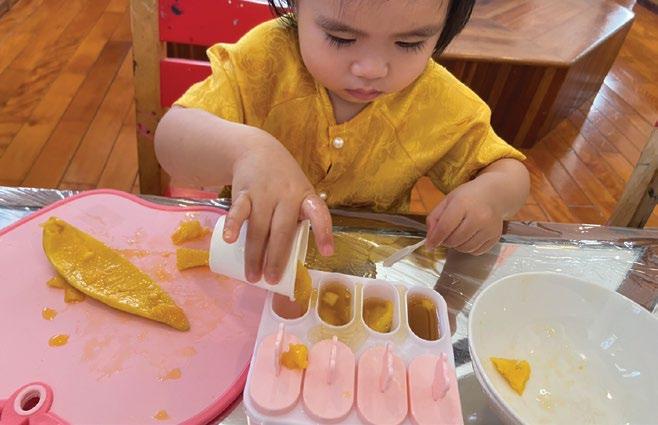
Teppi often excited and delighted his friends and teachers by crafting ‘ice cream’ in the kitchen during imaginative play.
It was truly awesome to see his creative process as he transformed balls and toys into delectable treats using his imaginary ice cream machine. Afterwards, he walked around, extending invitations to everyone.
“Chocolate ice cream?
Strawberry? Banana?” - Teppi
Inspired by Teppi, we worked together creating our frozen delights from fresh fruit. The focus and determination was wonderful. We had the best time making and enjoying our treats together.
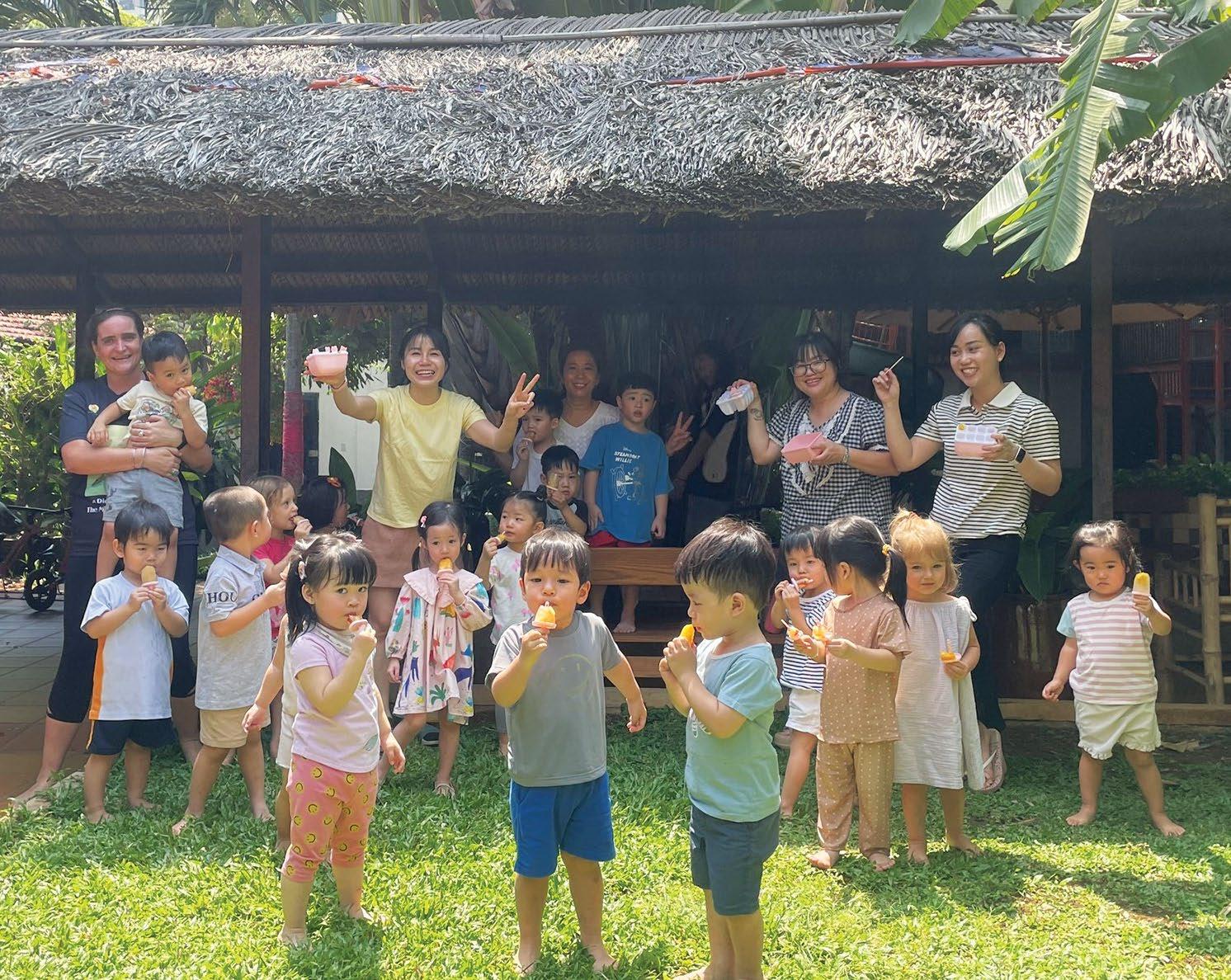
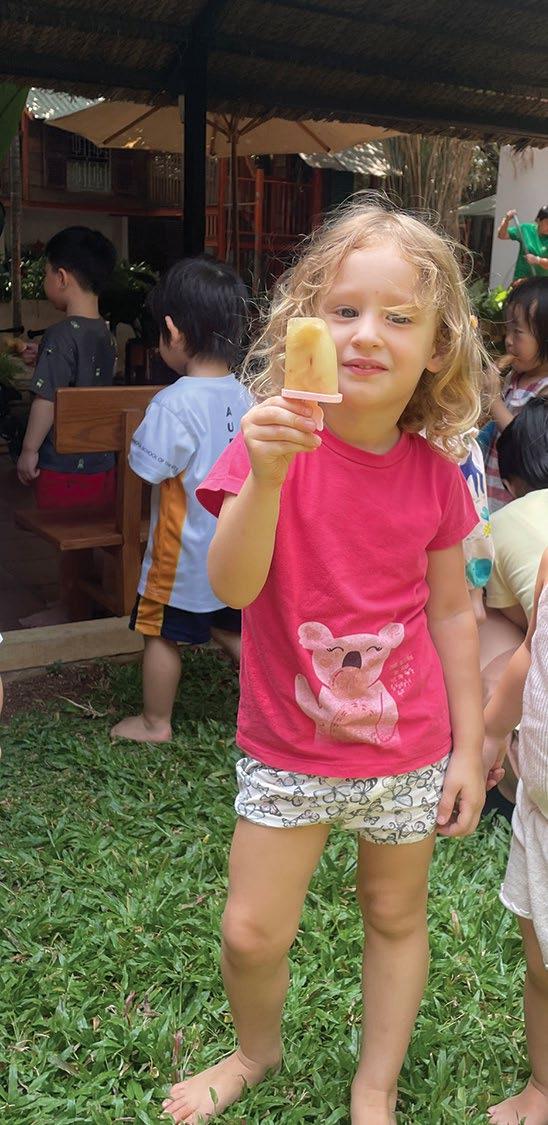
“This is mango.” - Kala
I wonder if it is sweet or sour?
“Sweet” - Emma
I wonder what color mangos are?
“Yellow” - Kala
“Green” - Emma
“I want apple ice-cream.“ - Teppi
“Mango is sweet.“ - Marie
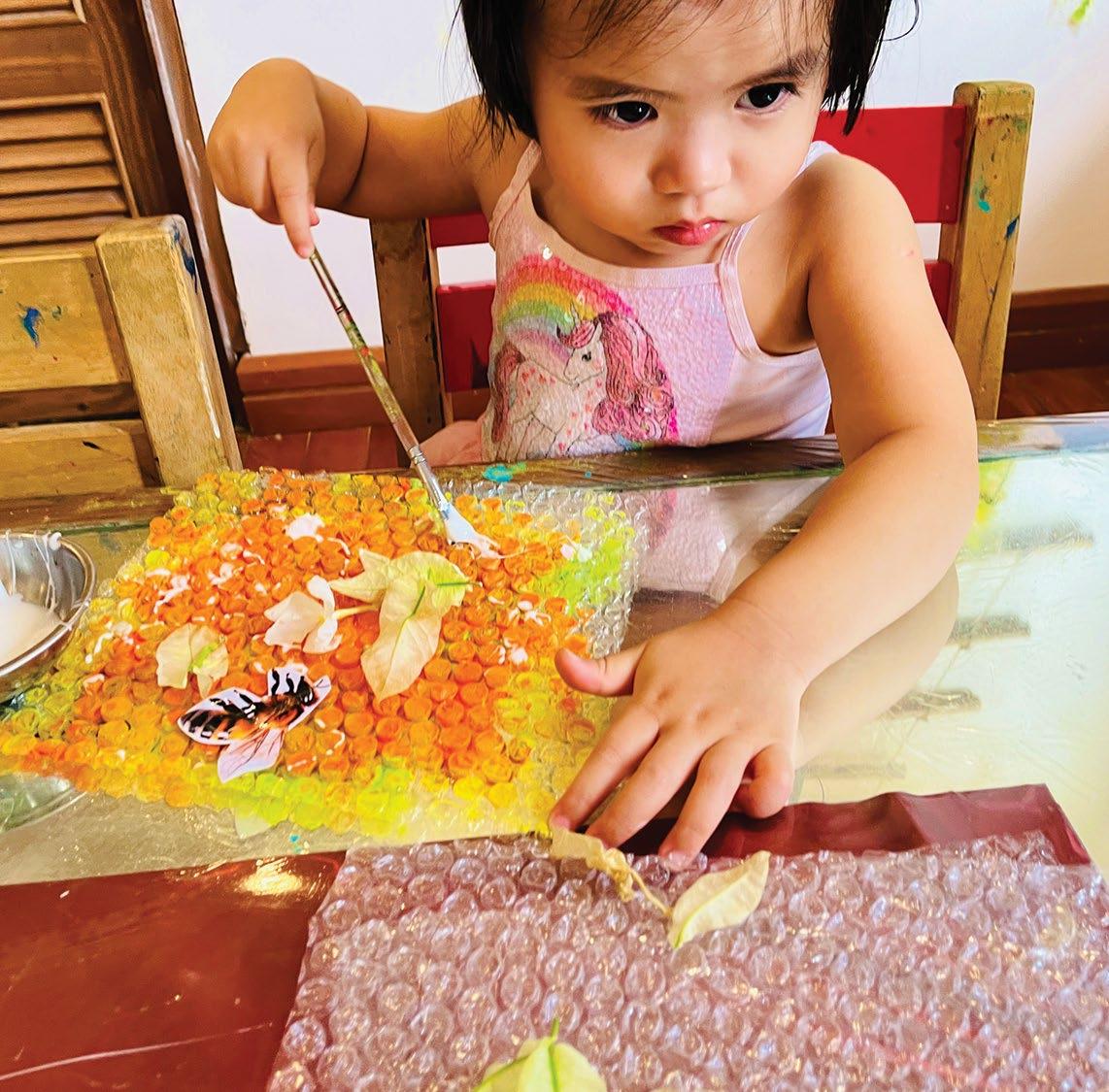
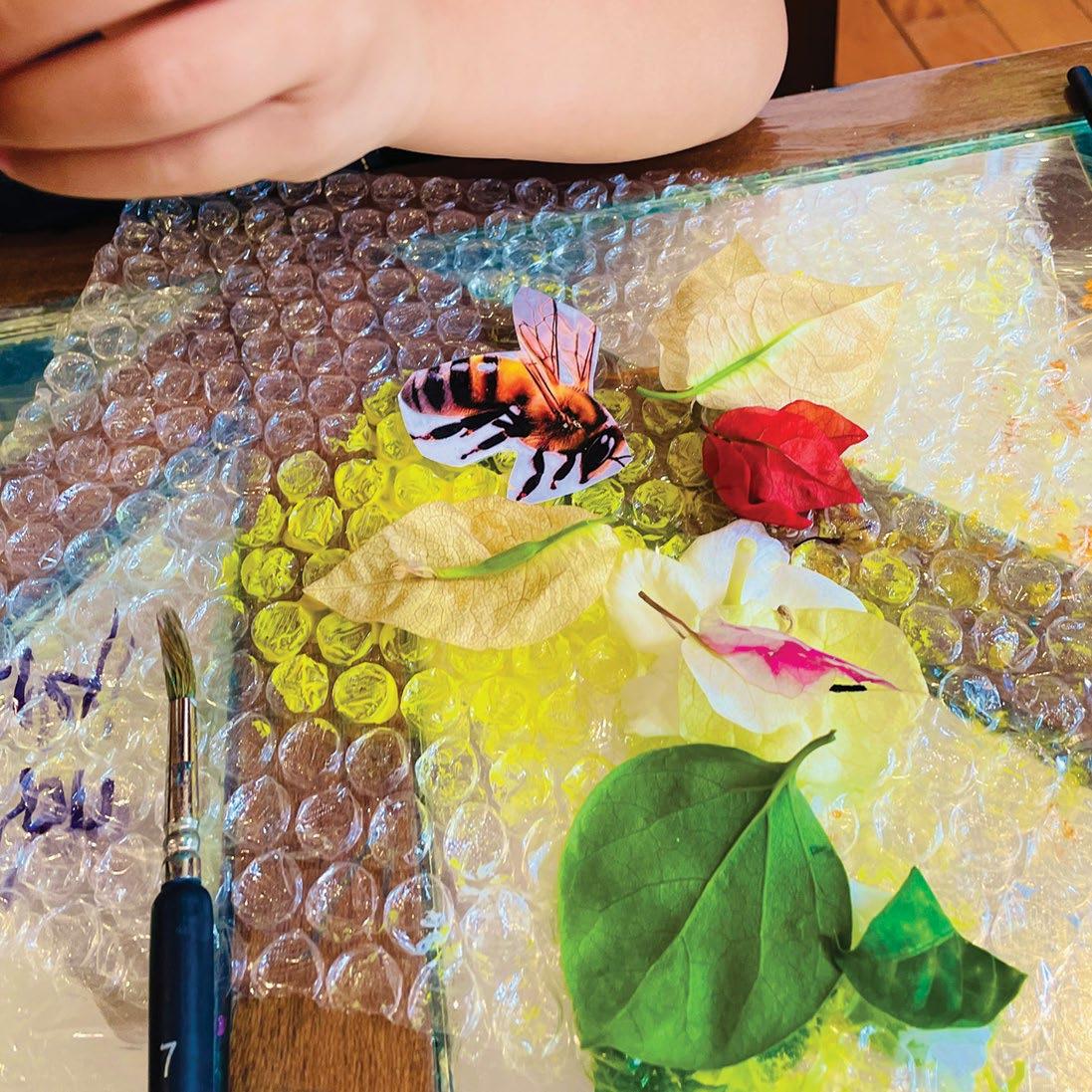
Our investigation into food and the use of honey as one of our ingredients, led us into a very deep and interesting exploration of bees. There were many questions:
What can we use honey for?
Where does honey come from?
What is a beehive?
It was time to go on adventures around the school and we wondered if this interest would encourage a love of nature and a future of strong ecological identities.
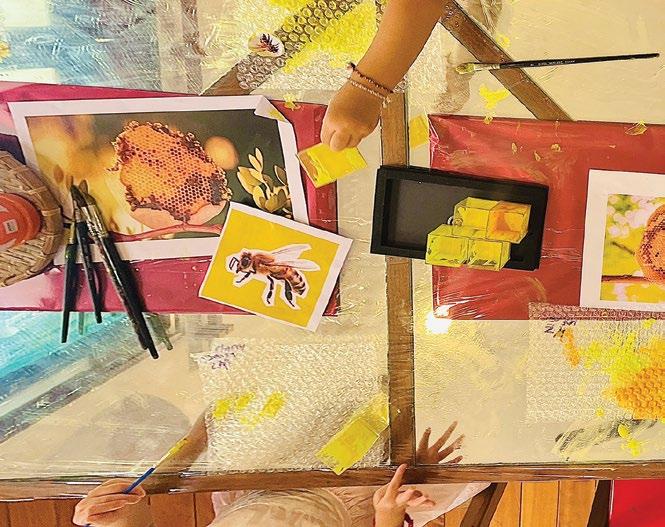
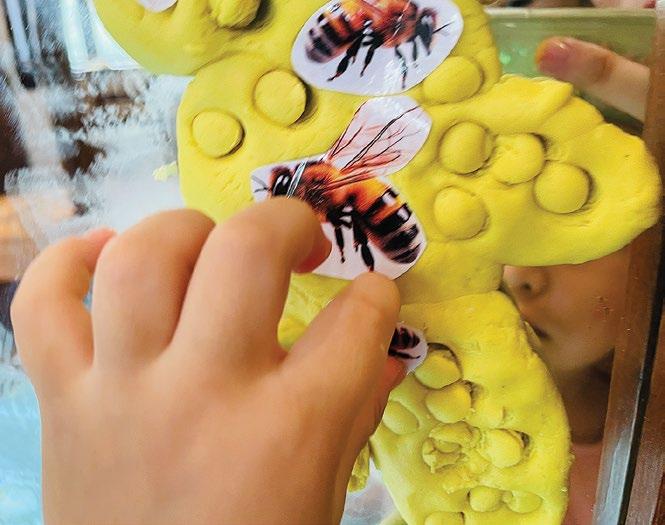
Our exploration of bees took us on many different routes of investigation, through art, making beehives with bubble wrap, to creating bees and beehives with play dough and recycled materials.
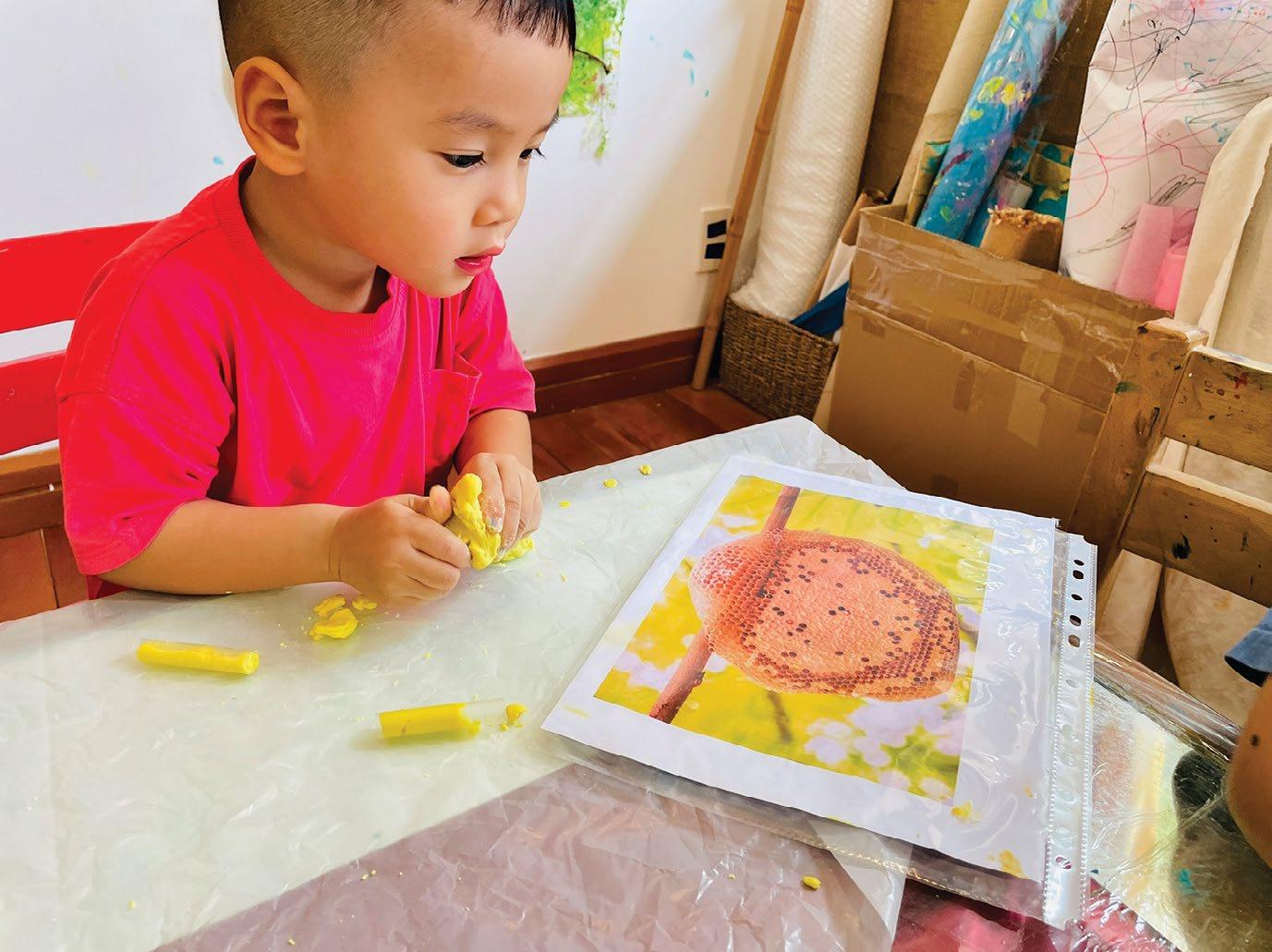
Our joy and creativity inspired us to see ourselves as a beehive in the most unique way. A beehive, like our class, is a community working together to achieve objectives. The beehive we created may not be as flawless as a genuine beehive, but it deepened our understanding and connection to nature.
“So many bees.” - Mon
“So many big and small bees.” - Jun
“Bees yellow and black." - Kala
"Sting is ouchie." - Kai
"Bees, buzz buzz buzz." - Shunki
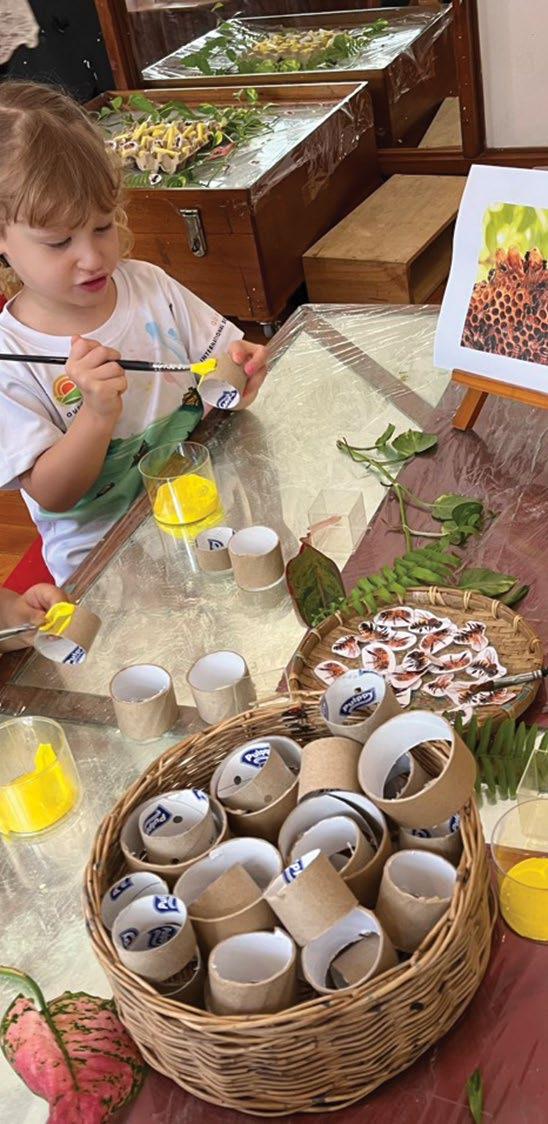
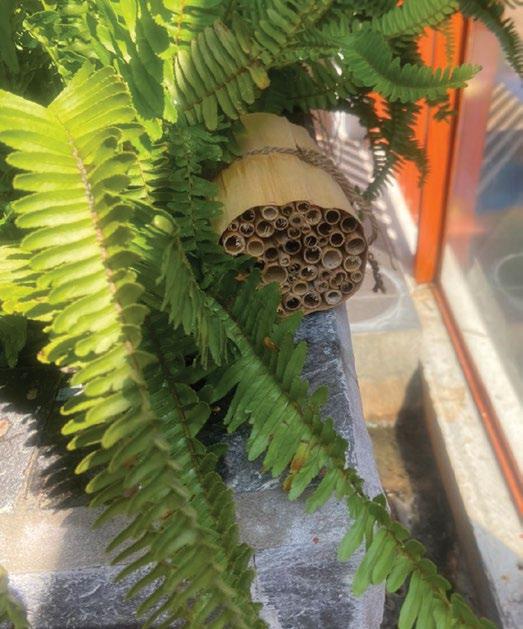
While exploring bees, we had the opportunity to walk around the school looking for different bees. In the Primary Villa, the Junior Primary Two class had set up a ‘bee hotel’ earlier in the year for their exploration. When we went to visit we were very interested and excited to see this hotel, where we could learn more about bee habits.
We were thrilled when we found some carpenter bees flying in the bamboo trees on the playground.
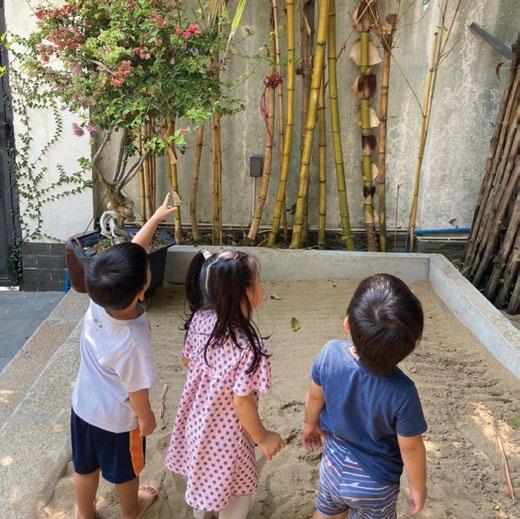
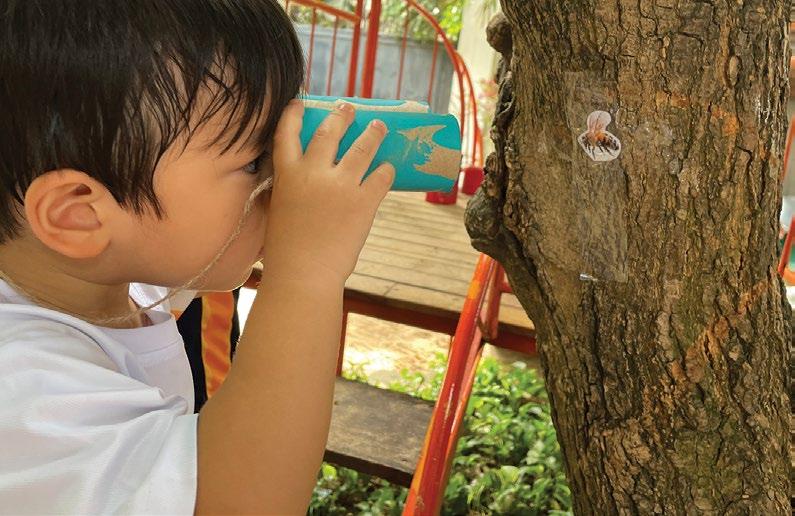
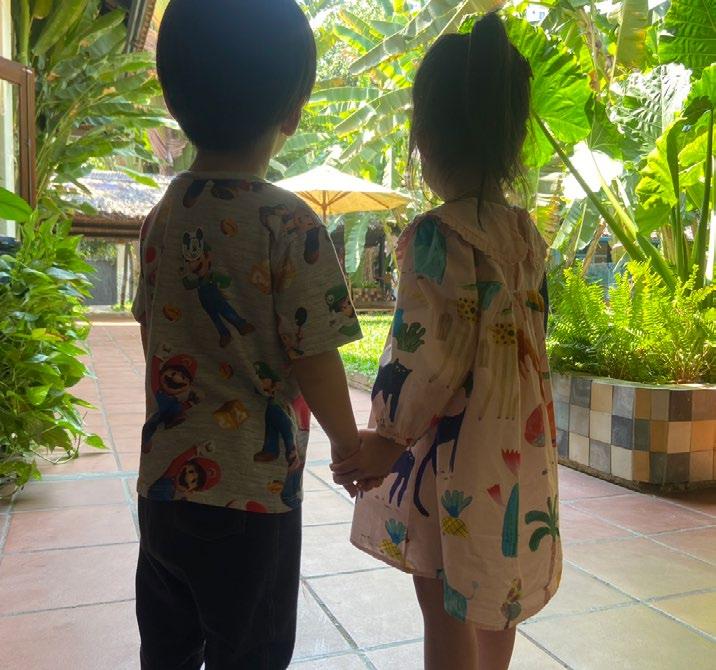
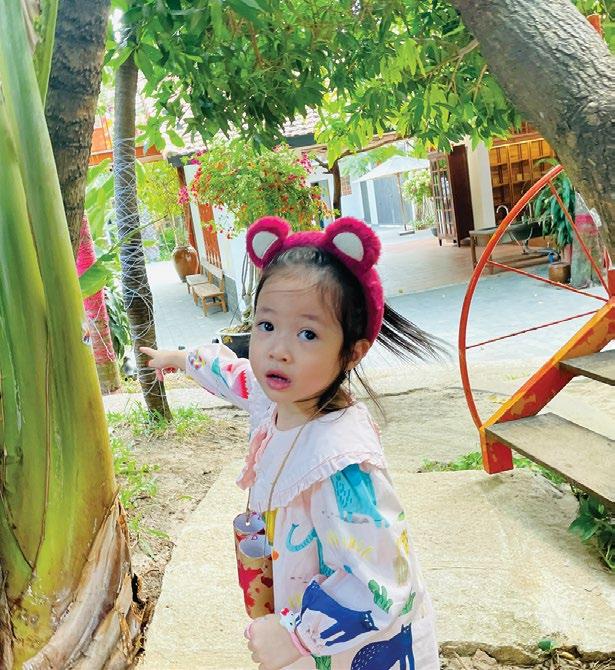
“Bee over there” - Cherry
“I see the black bee” - Liam
“Big bees” - Kala
“I like bees” - Shuki
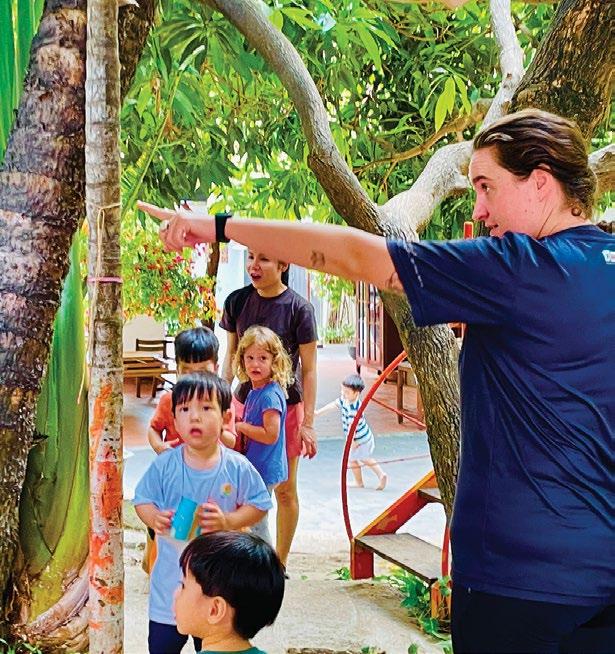
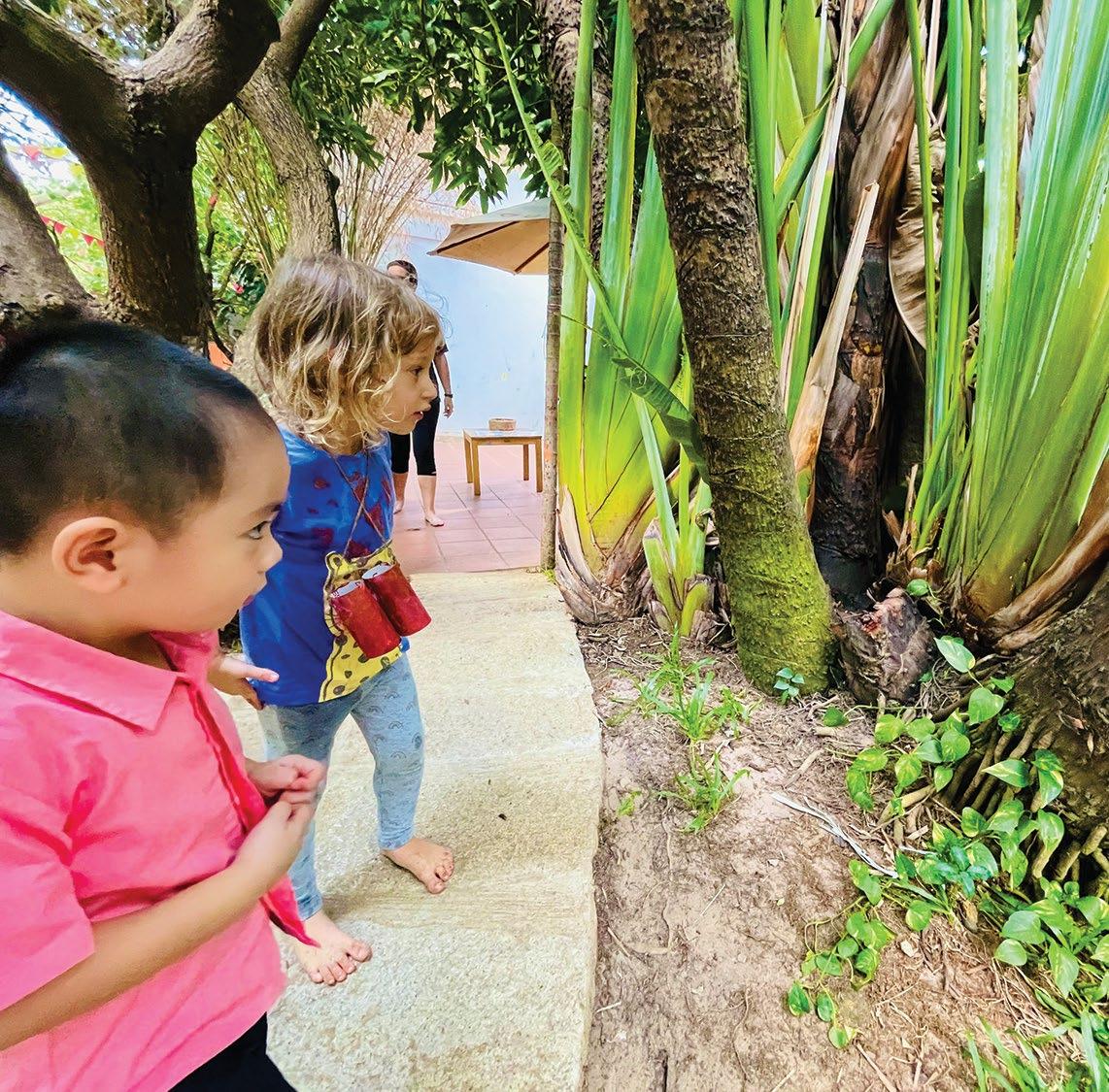
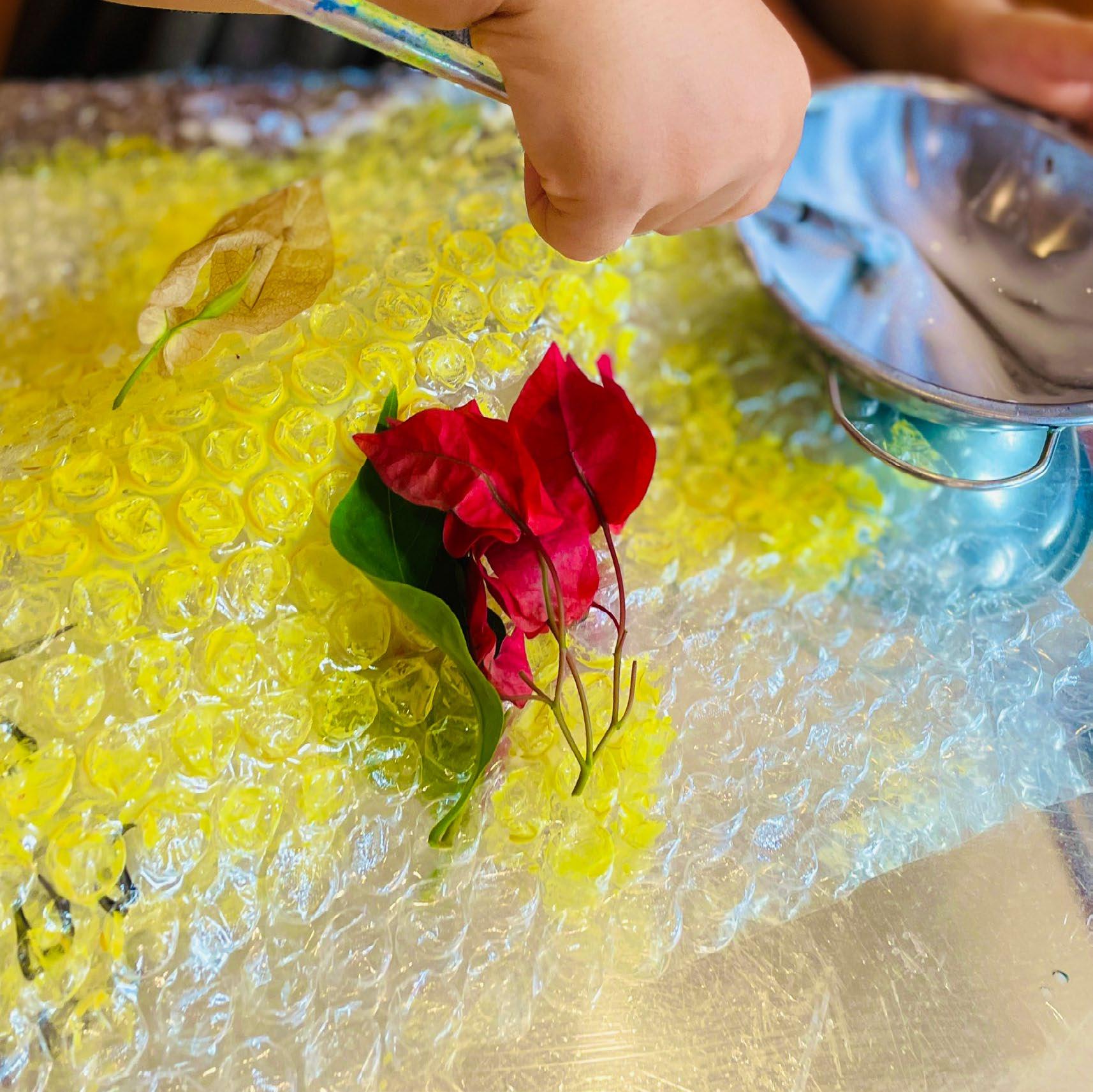
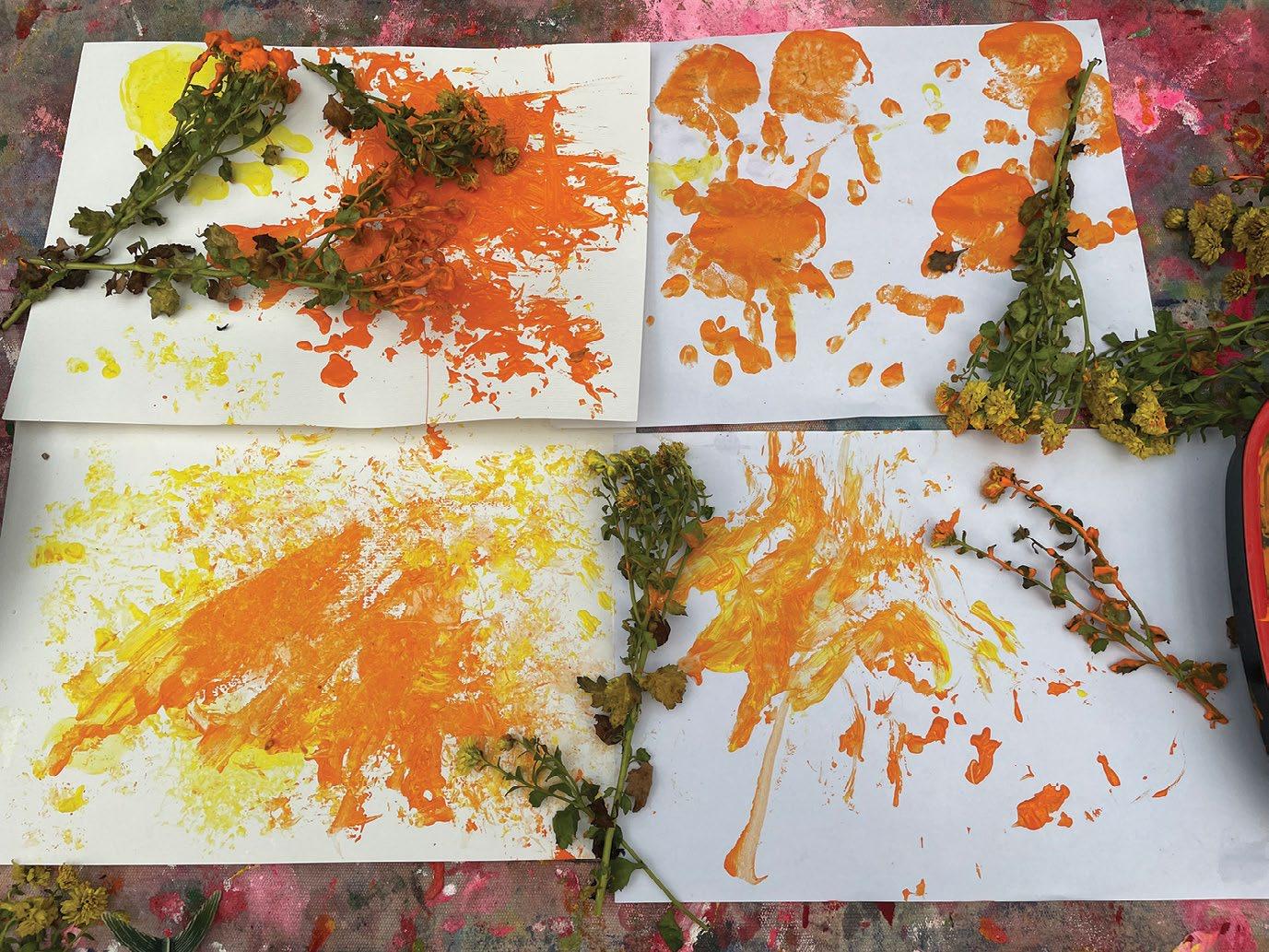
We would like to say a massive thank you to all of our amazing Camellia children for an incredible year. We are so grateful to all of you for making this year a memorable one. Our Dialogue with Place has led us down many new and exciting roads, and within that, you have all found your hive within Aurora. This has been your Dialogue with Place.
Researchers
Shuki
Emma
Louis
Kala
Shunki
Ren
Mochi
Hana
Cherry
Jun
Teppi
Sushi
Agnes
Rei
Taeri
Mon
Seojun
Odisseas
Liam
Kai
Marie
Teachers
Ms Amber (Lead Teacher)
Ms Uyen (Co-Teacher)
Ms My Anh (Co-Teacher)
Ms An (Co-Teacher)
Ms Han (Co-Teacher)
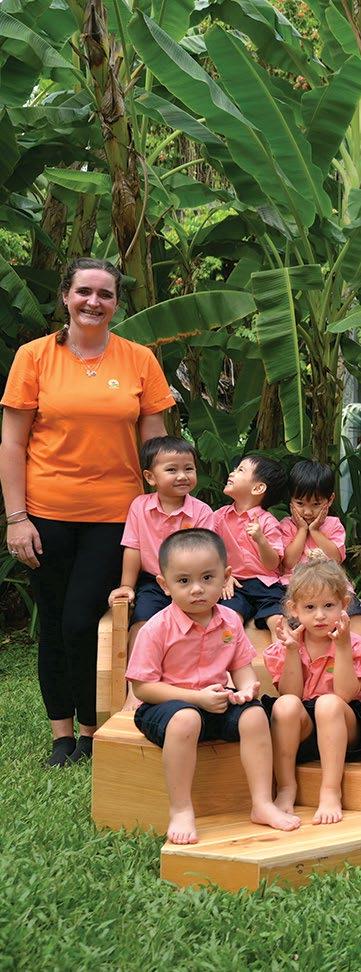
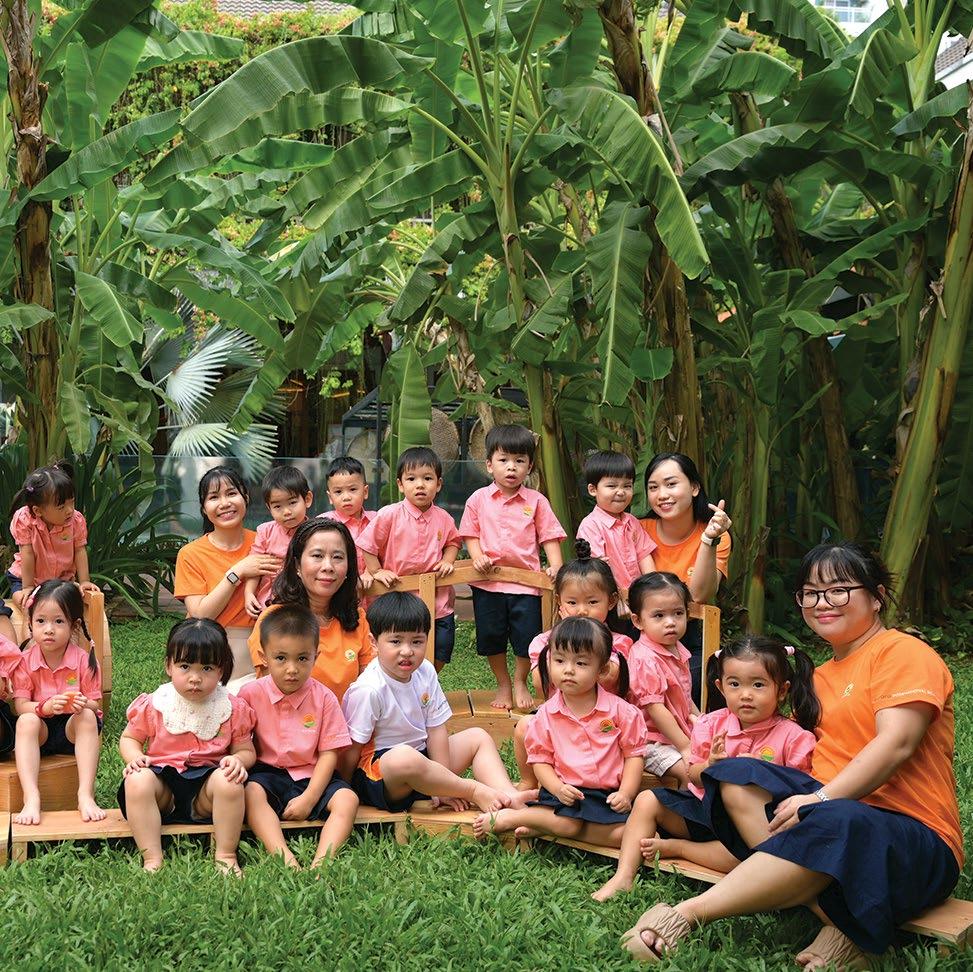
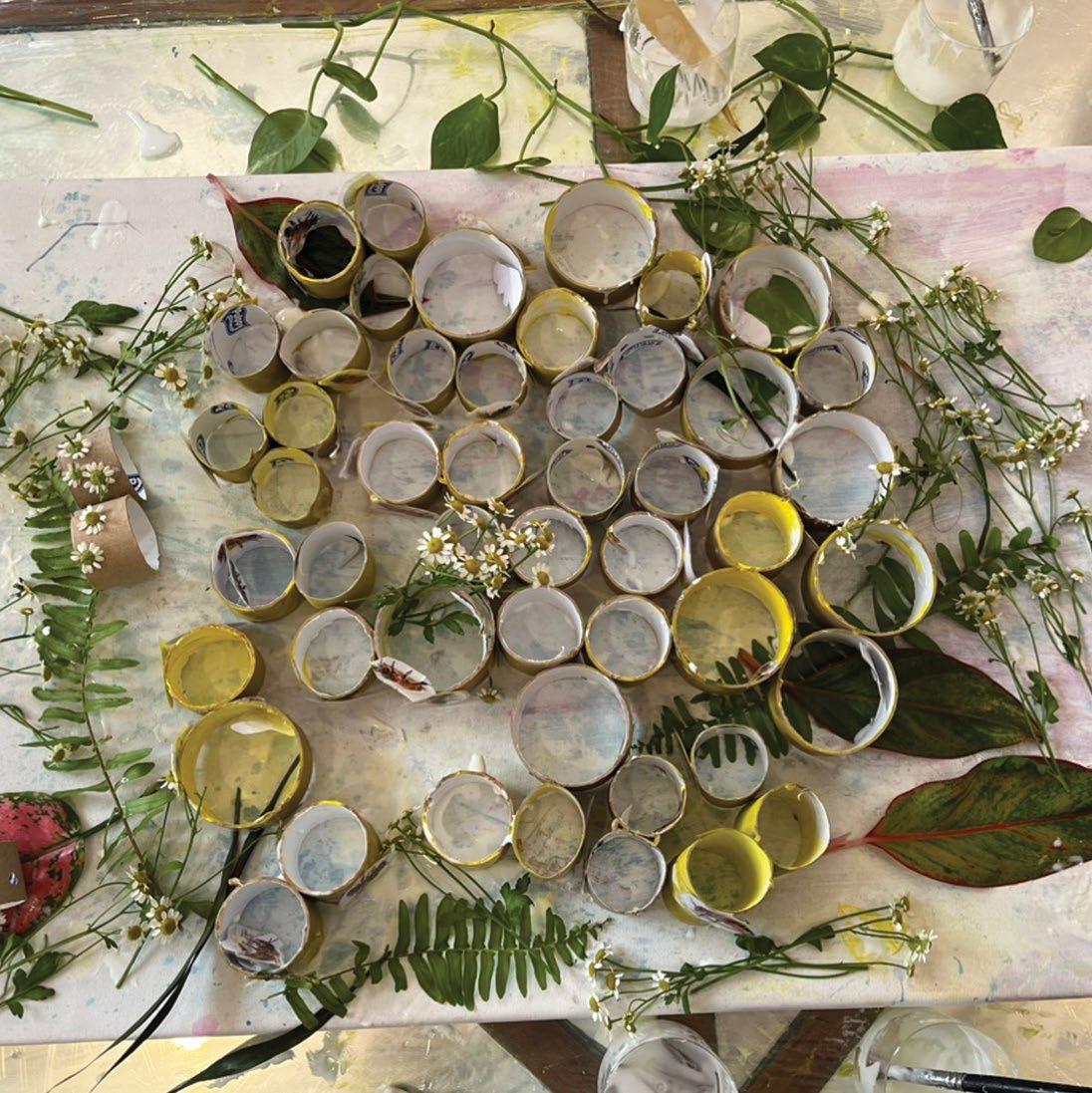
11-11A-13-15 Tran Ngoc Dien, Thao Dien Ward, Thu Duc City, Ho Chi Minh City, Vietnam. +84 (028) 3744 2991 / +84 (0) 982 012 860 info@auroraschool.vn www.auroraschool.vn Scholastic Year 2023/2024 Copyright 2024 Aurora International School Of The Arts Spring Hill Education Vietnam. Primavera Aurora All rights reserved.

